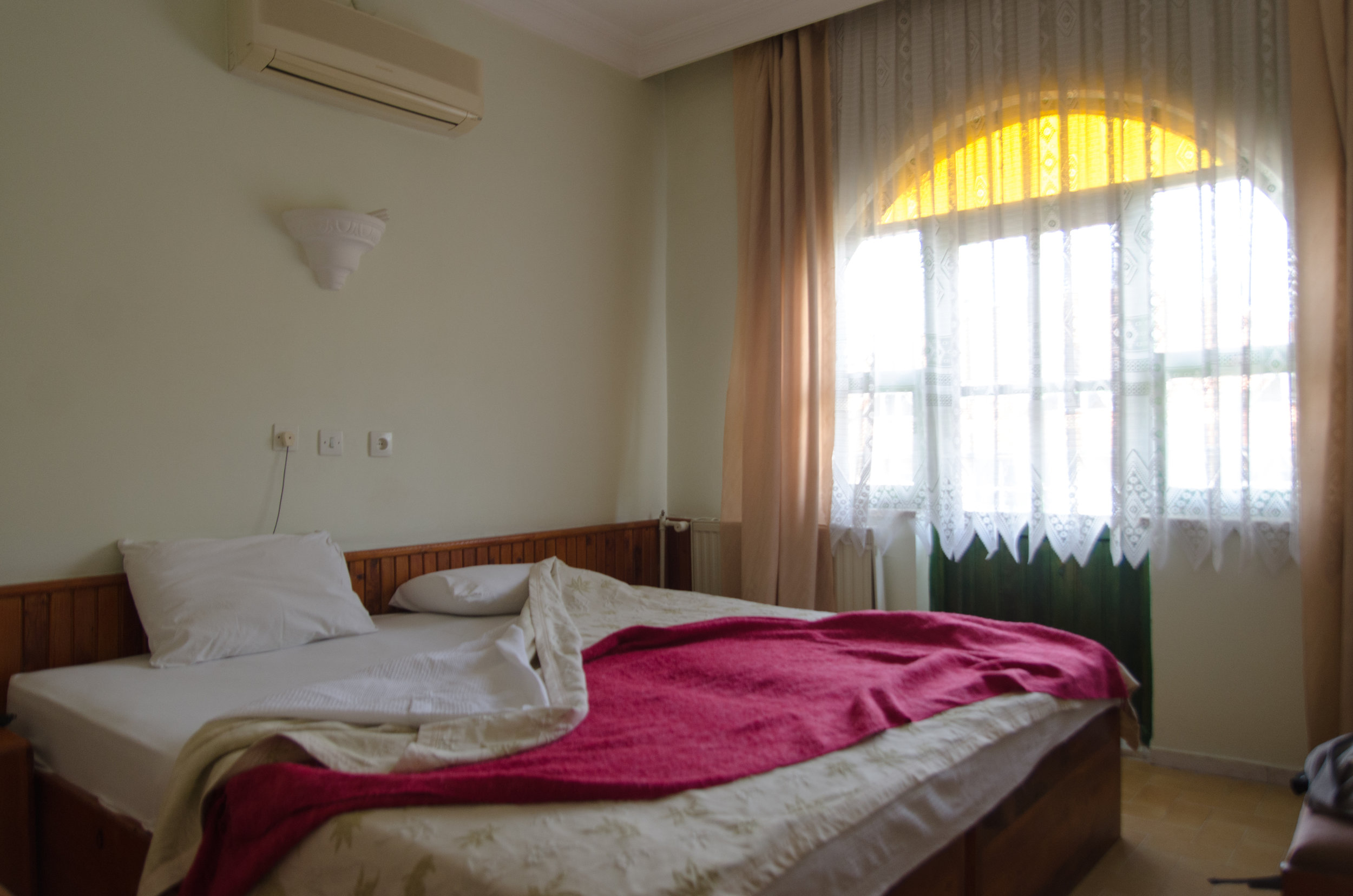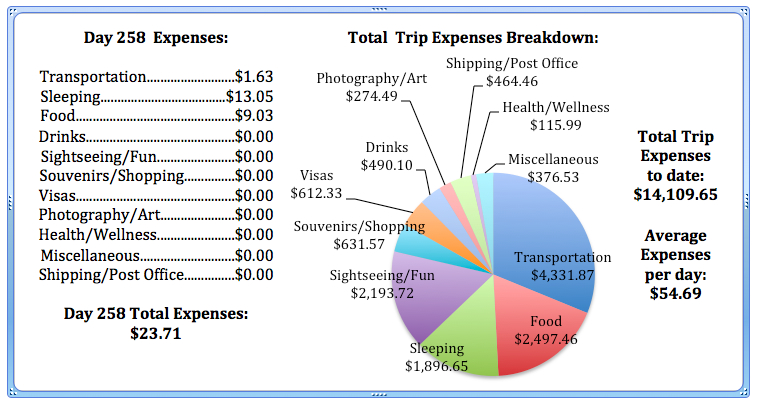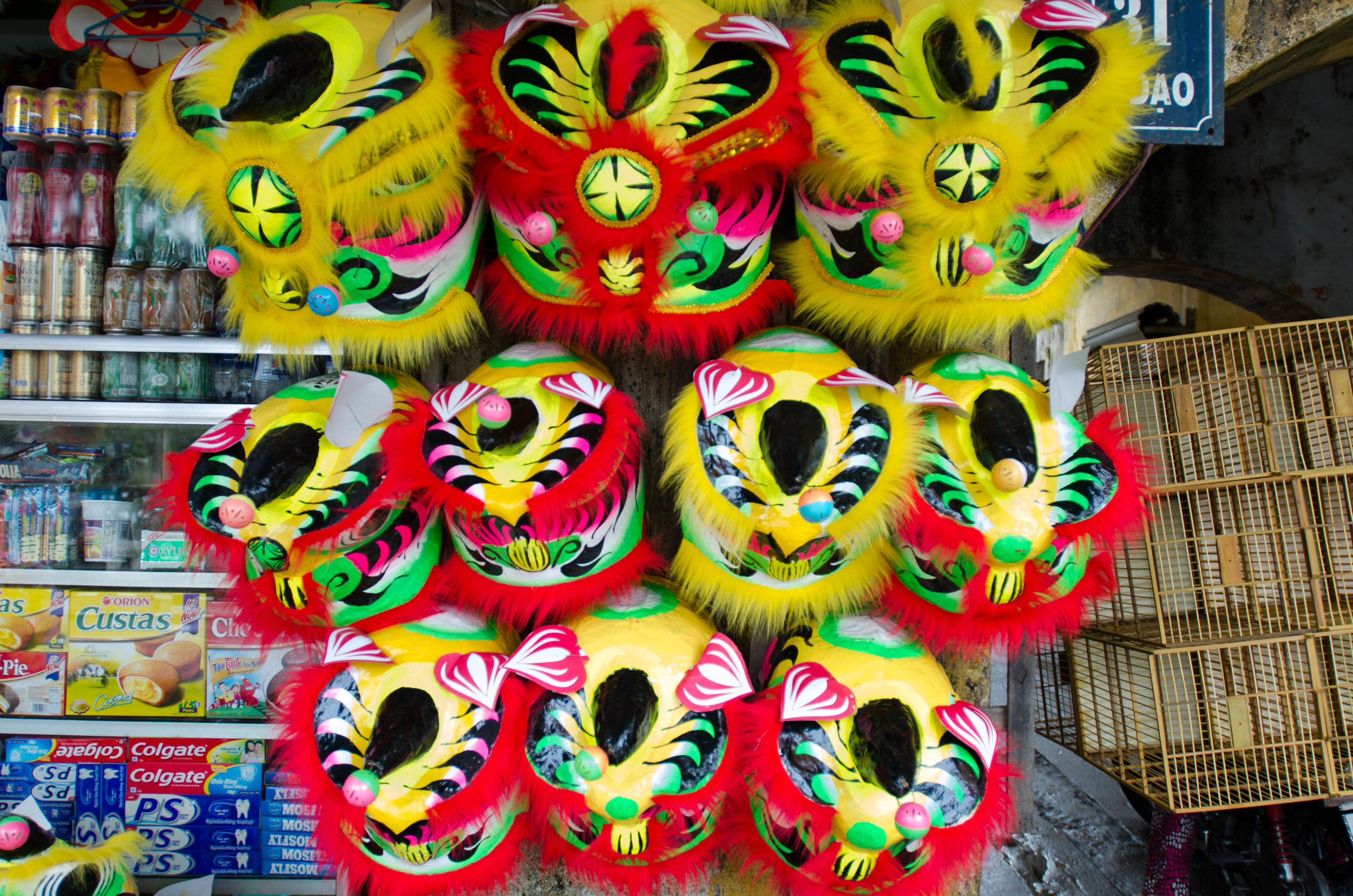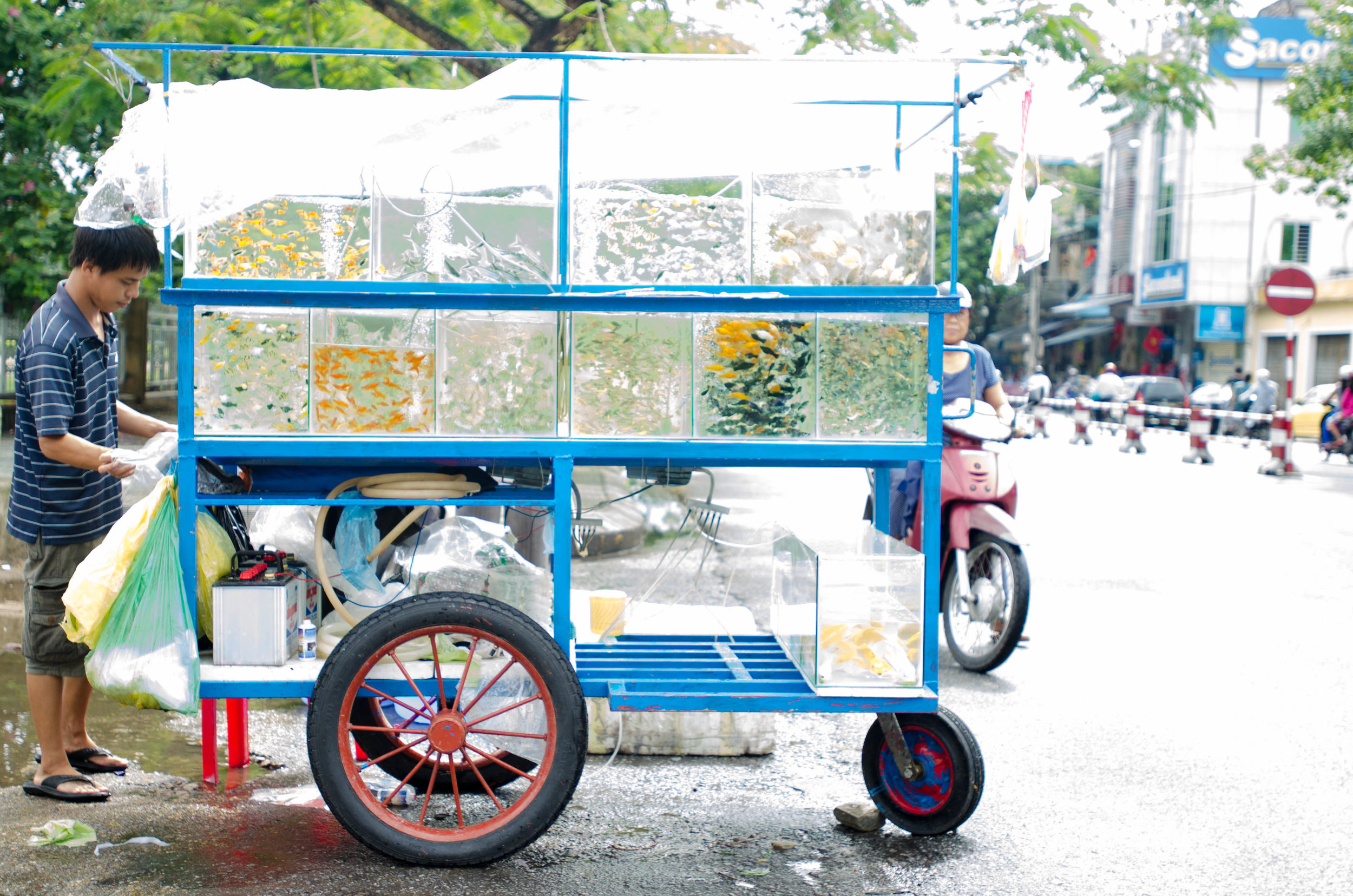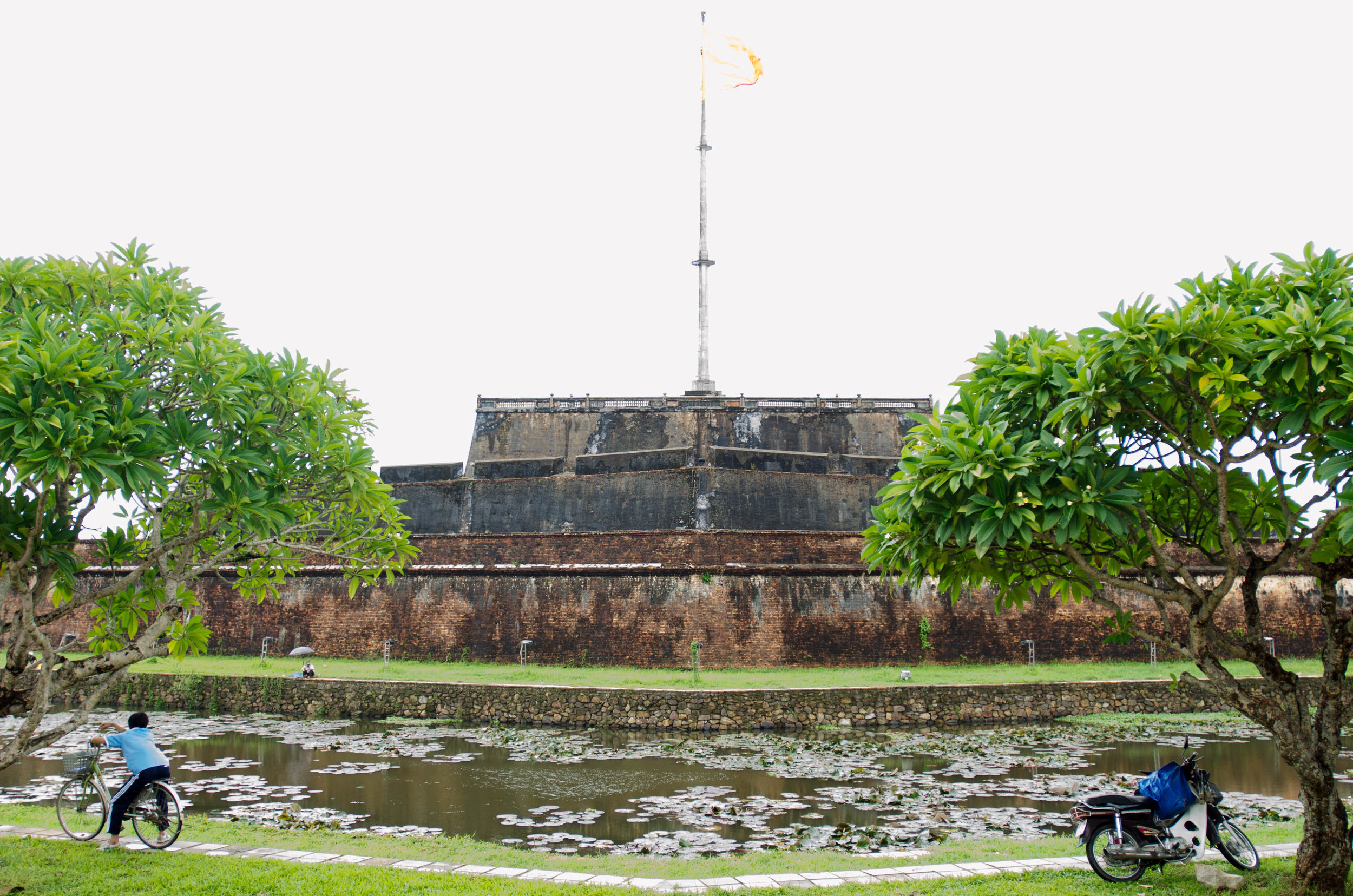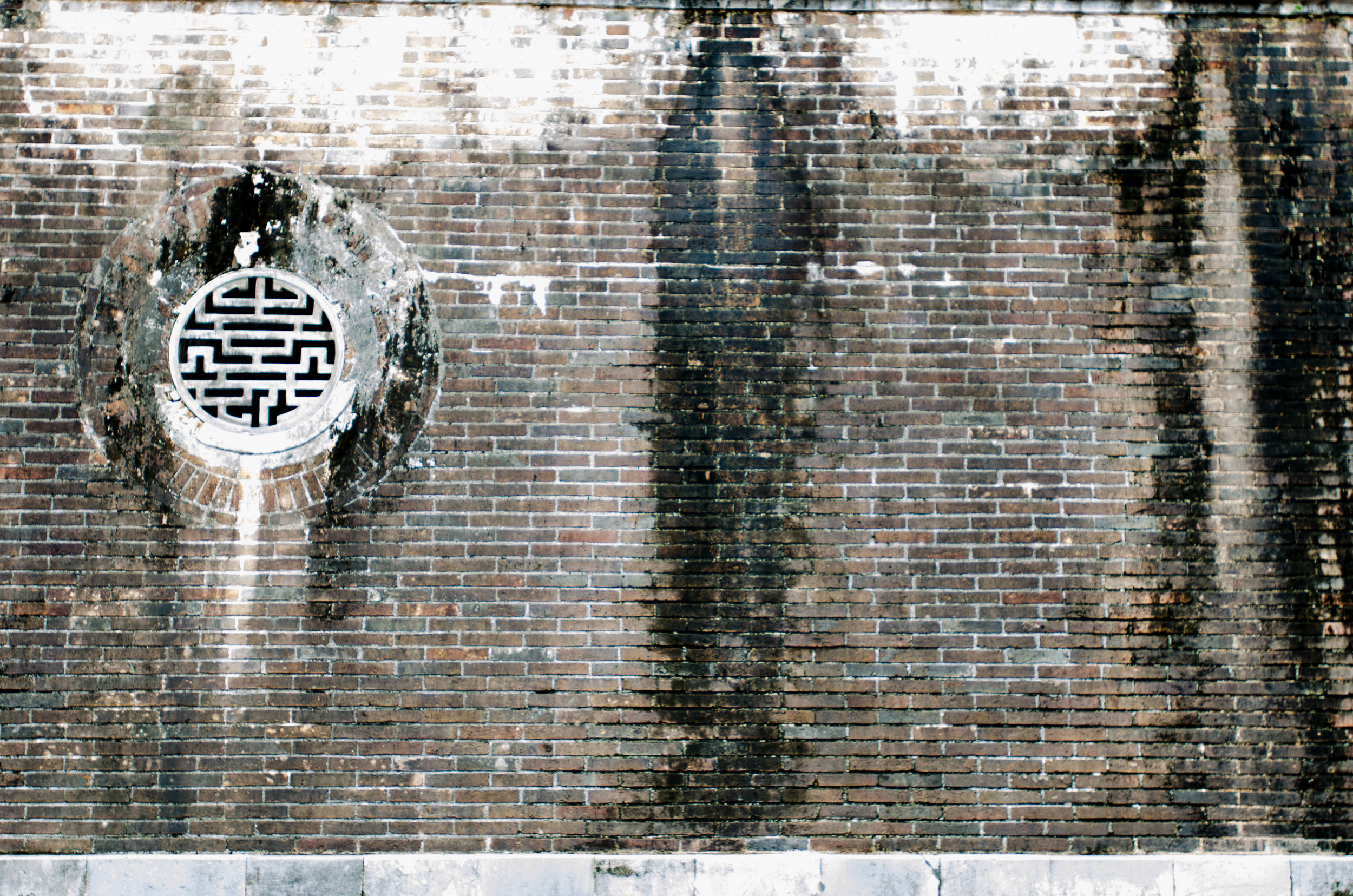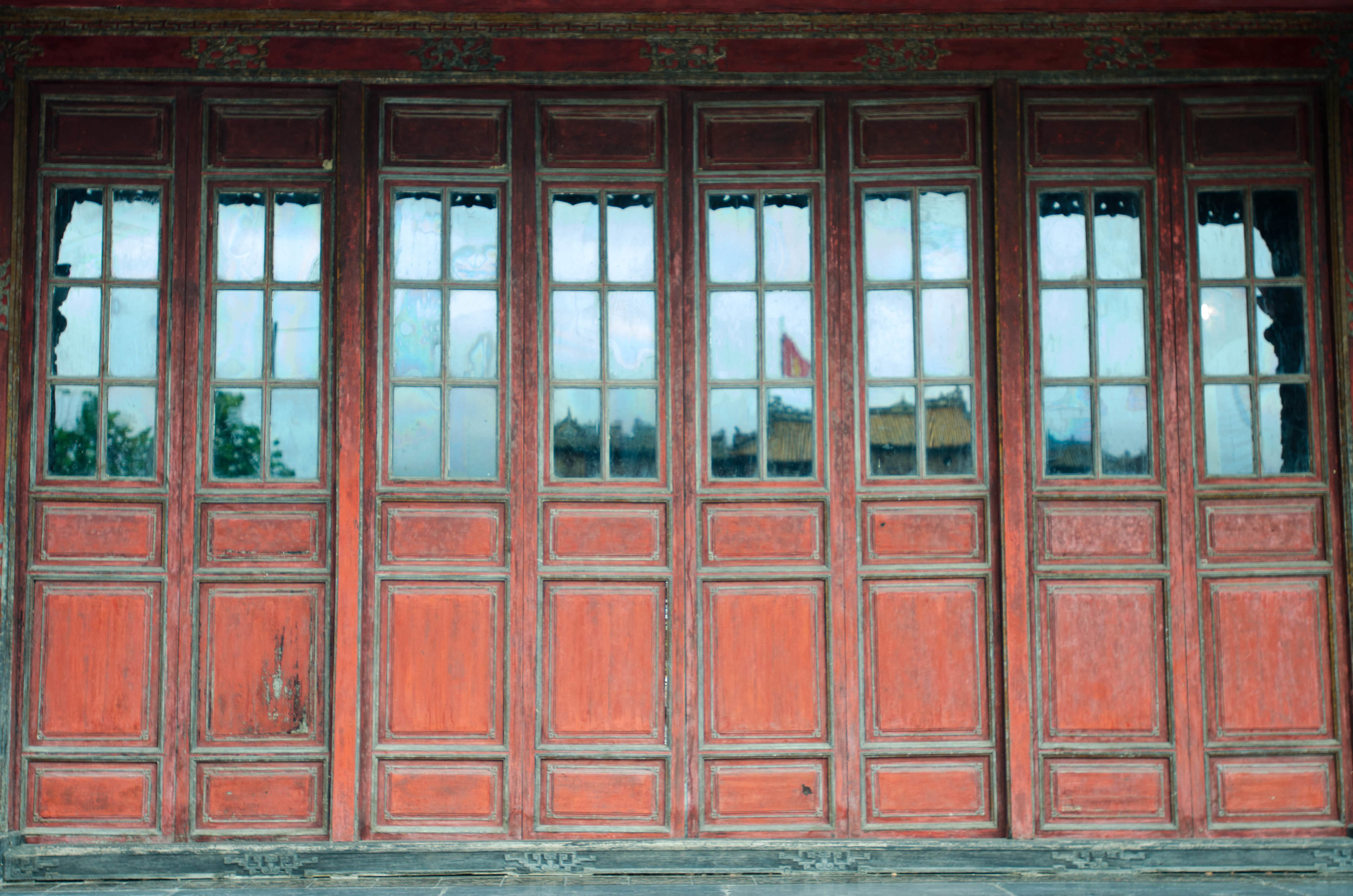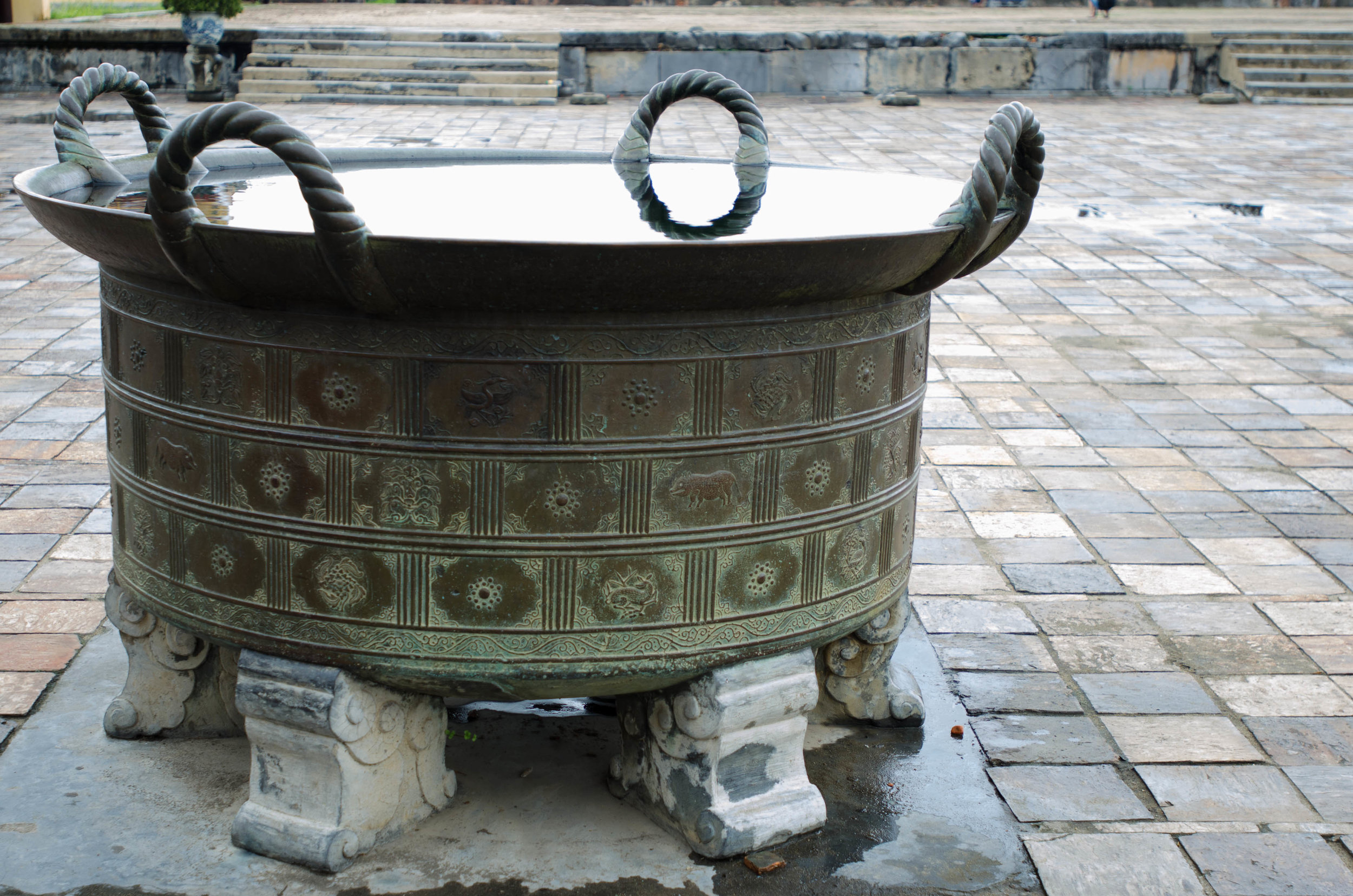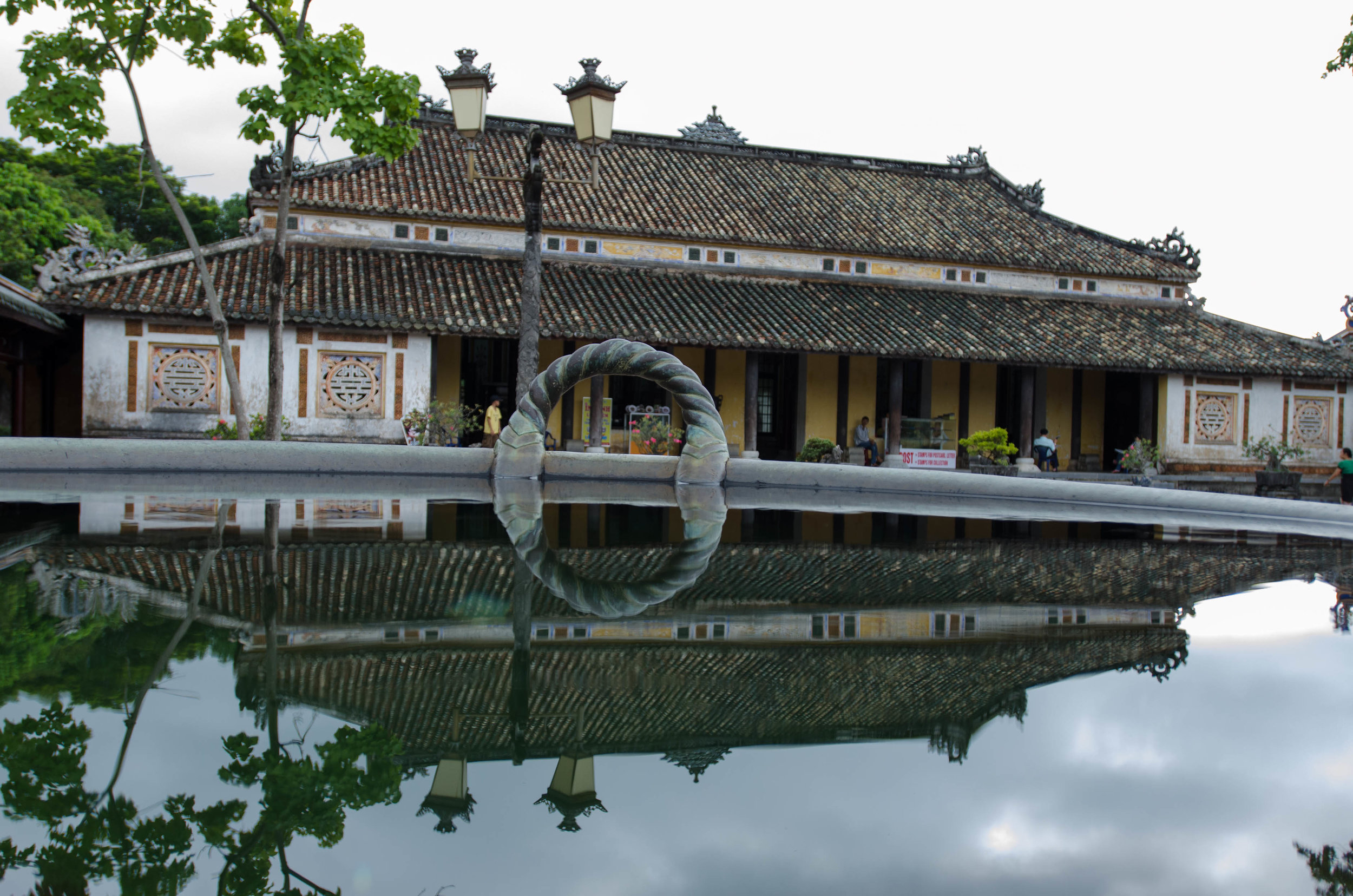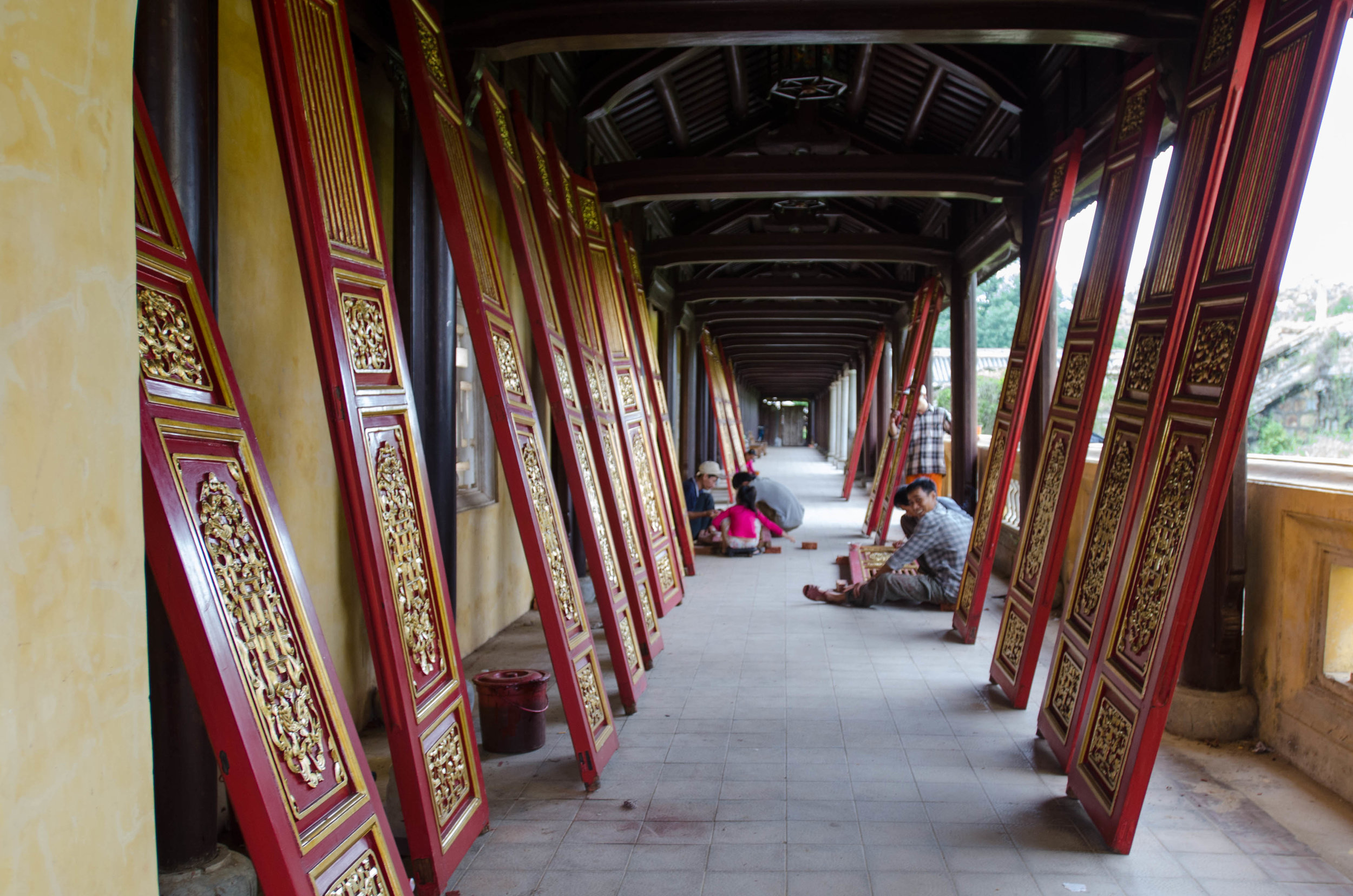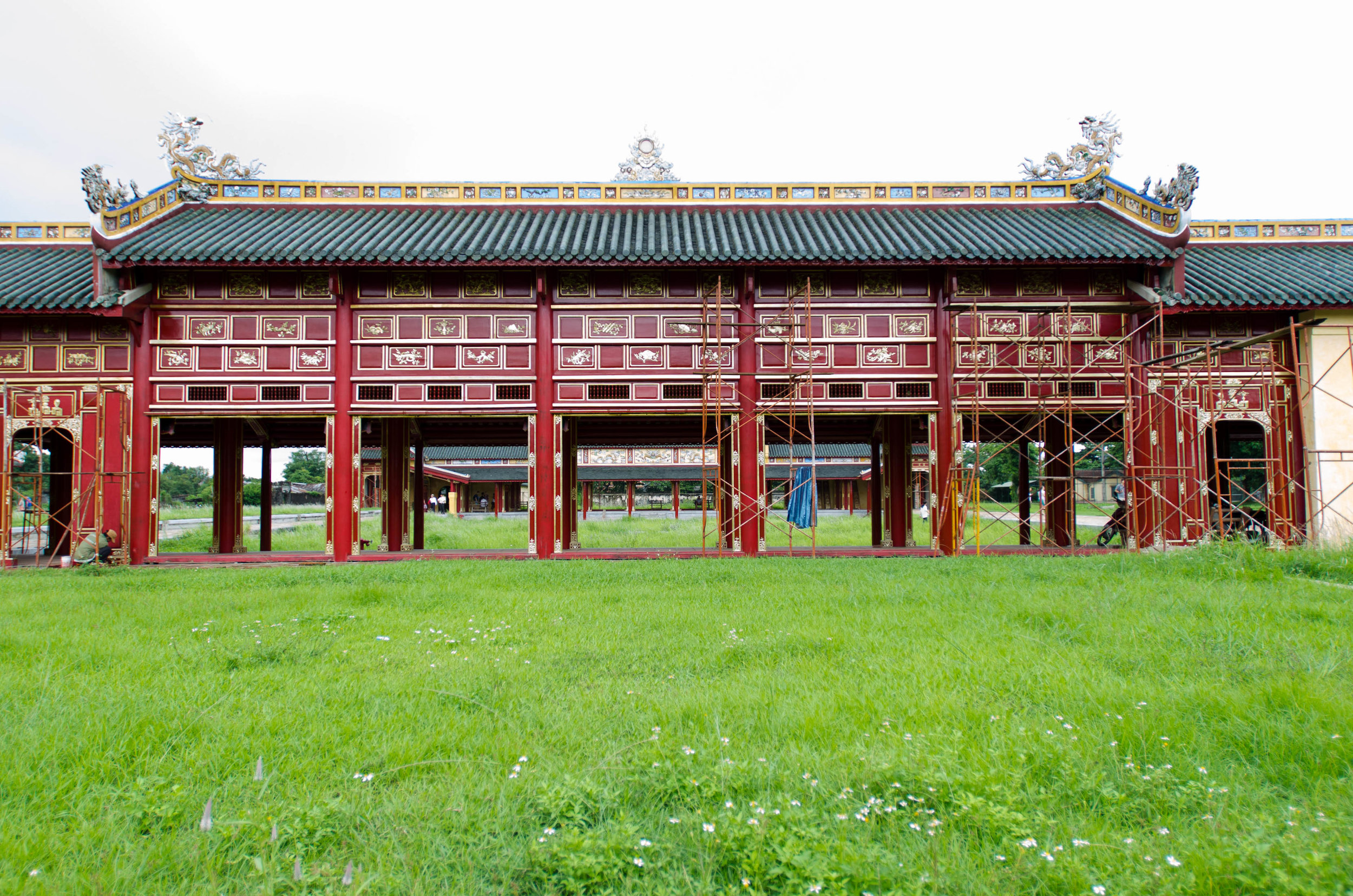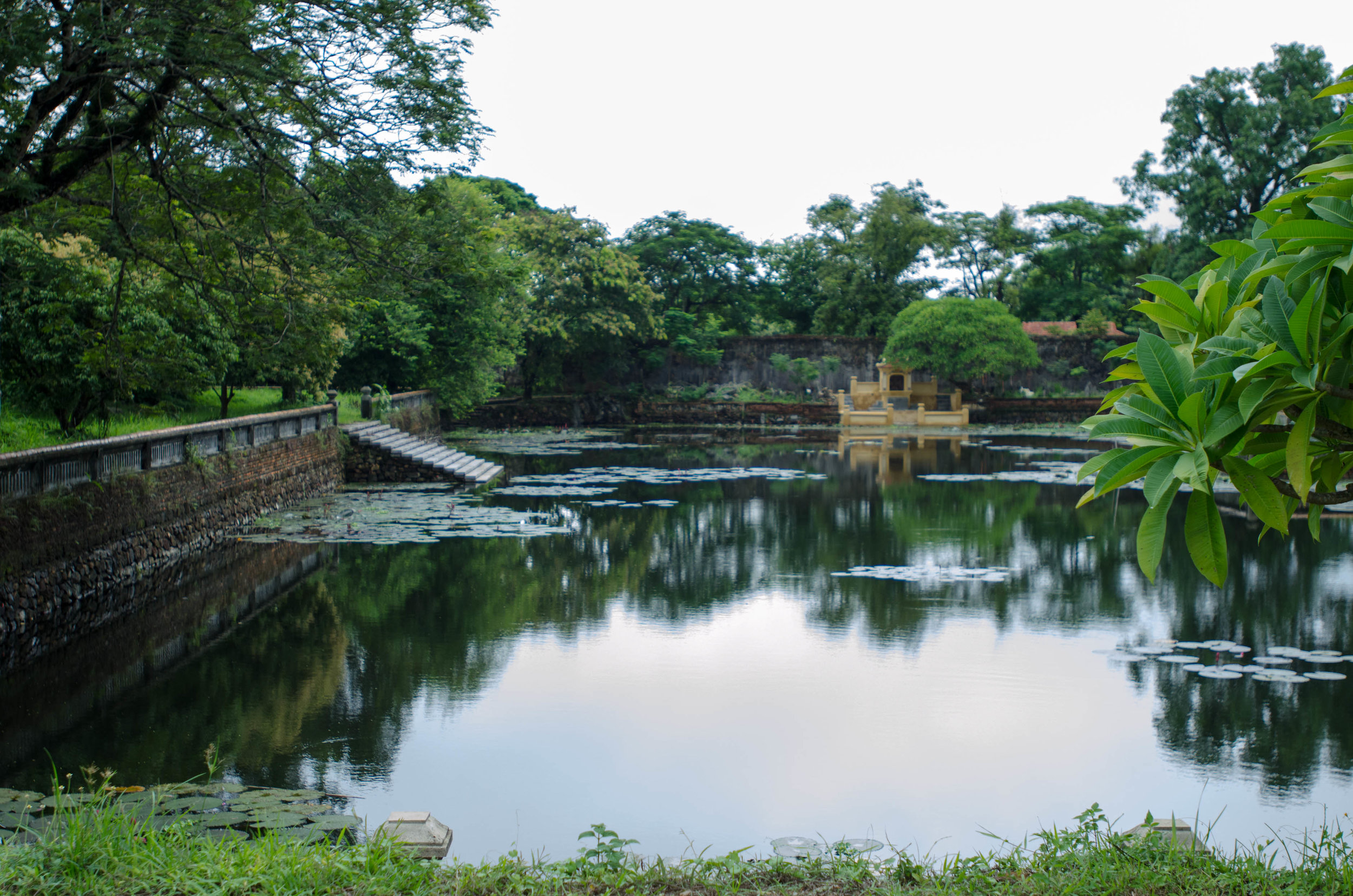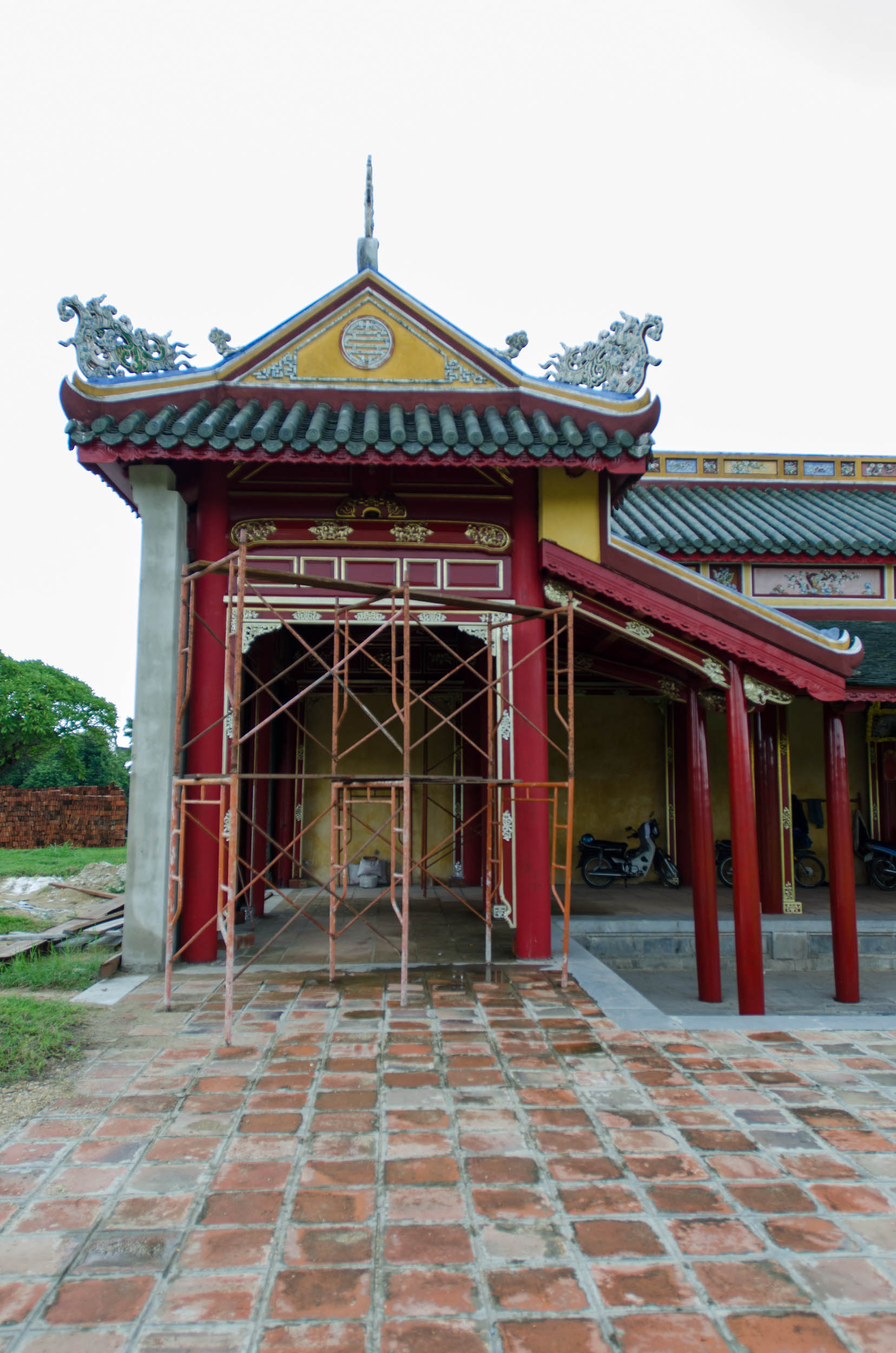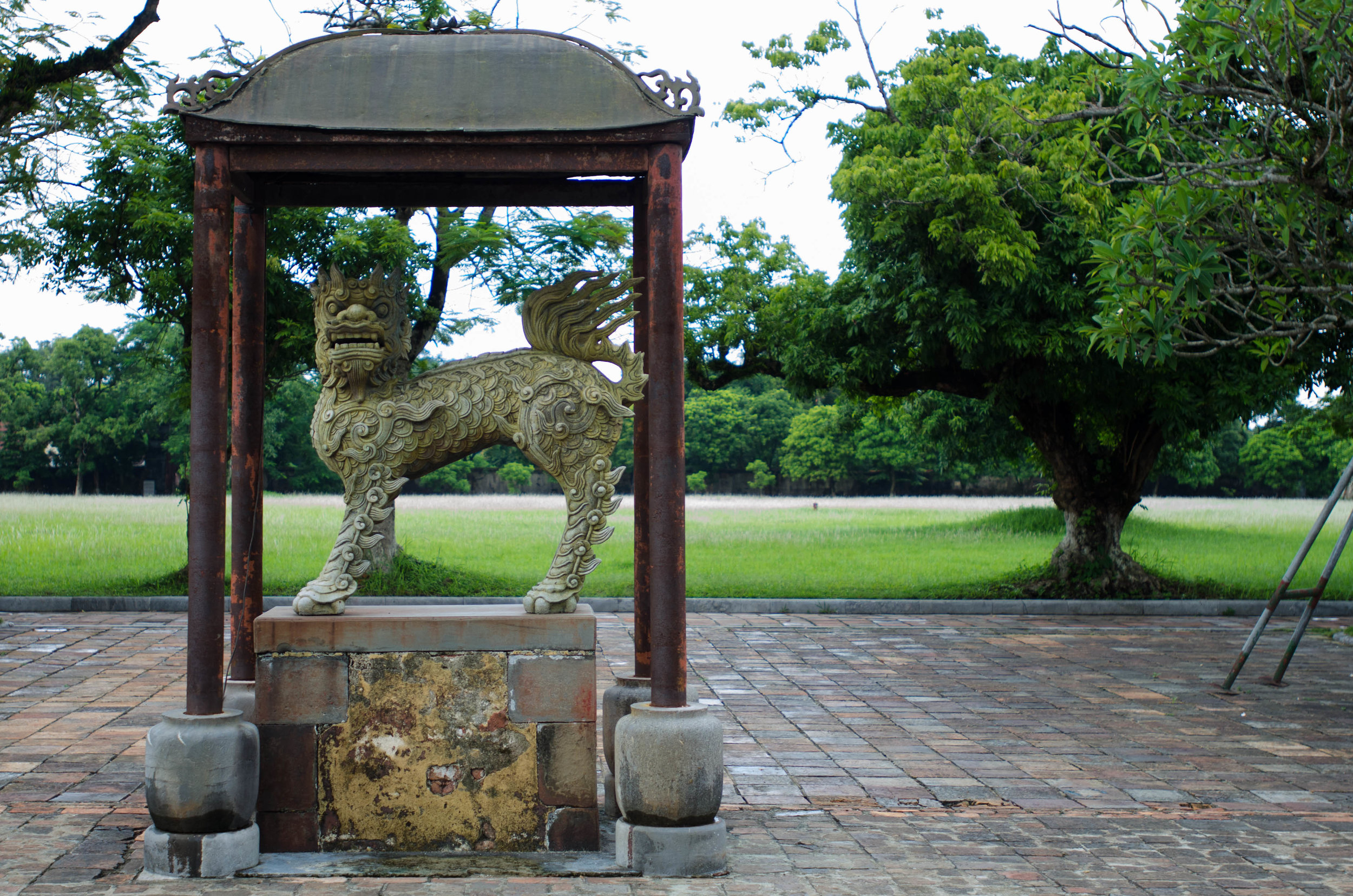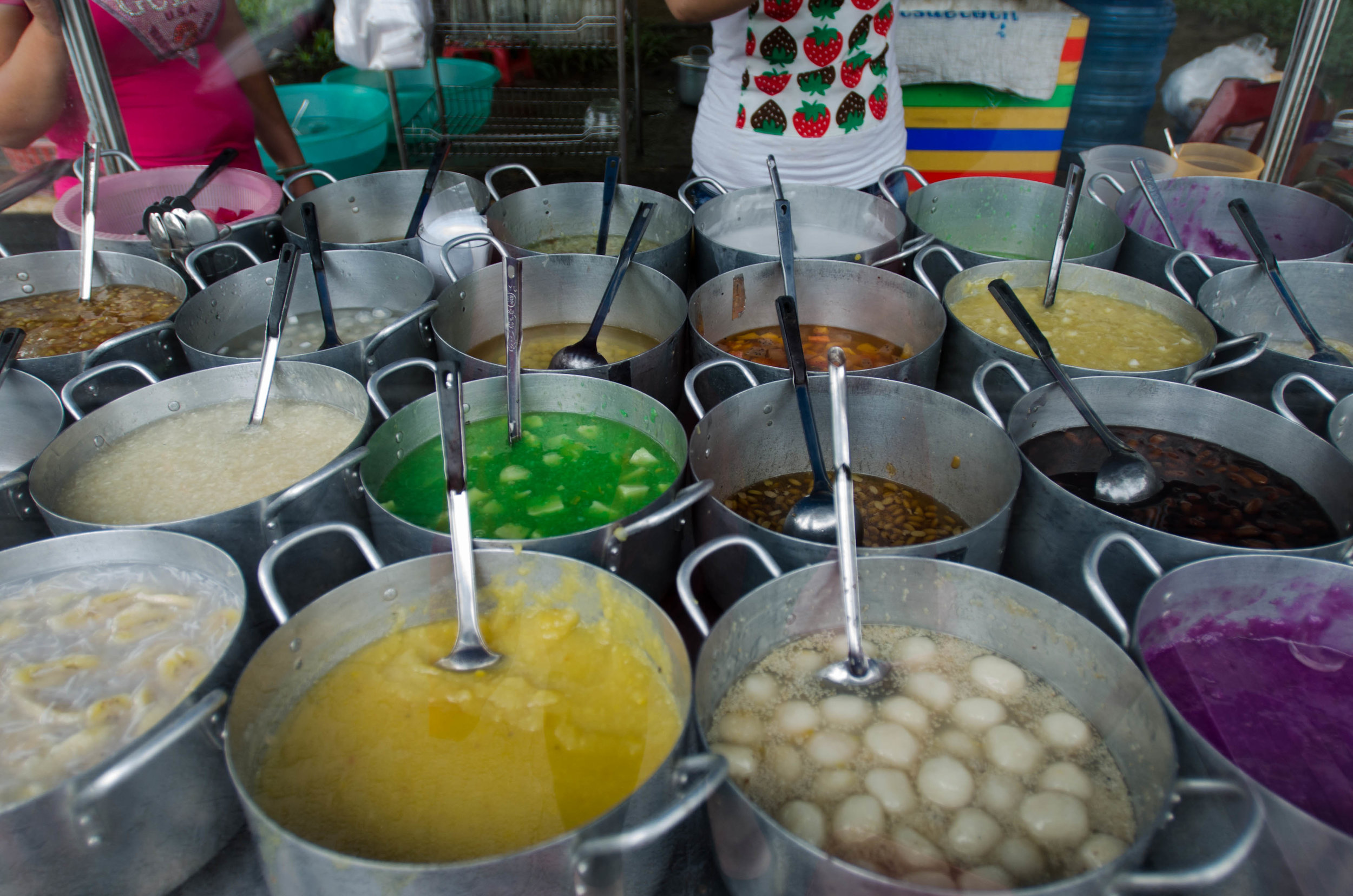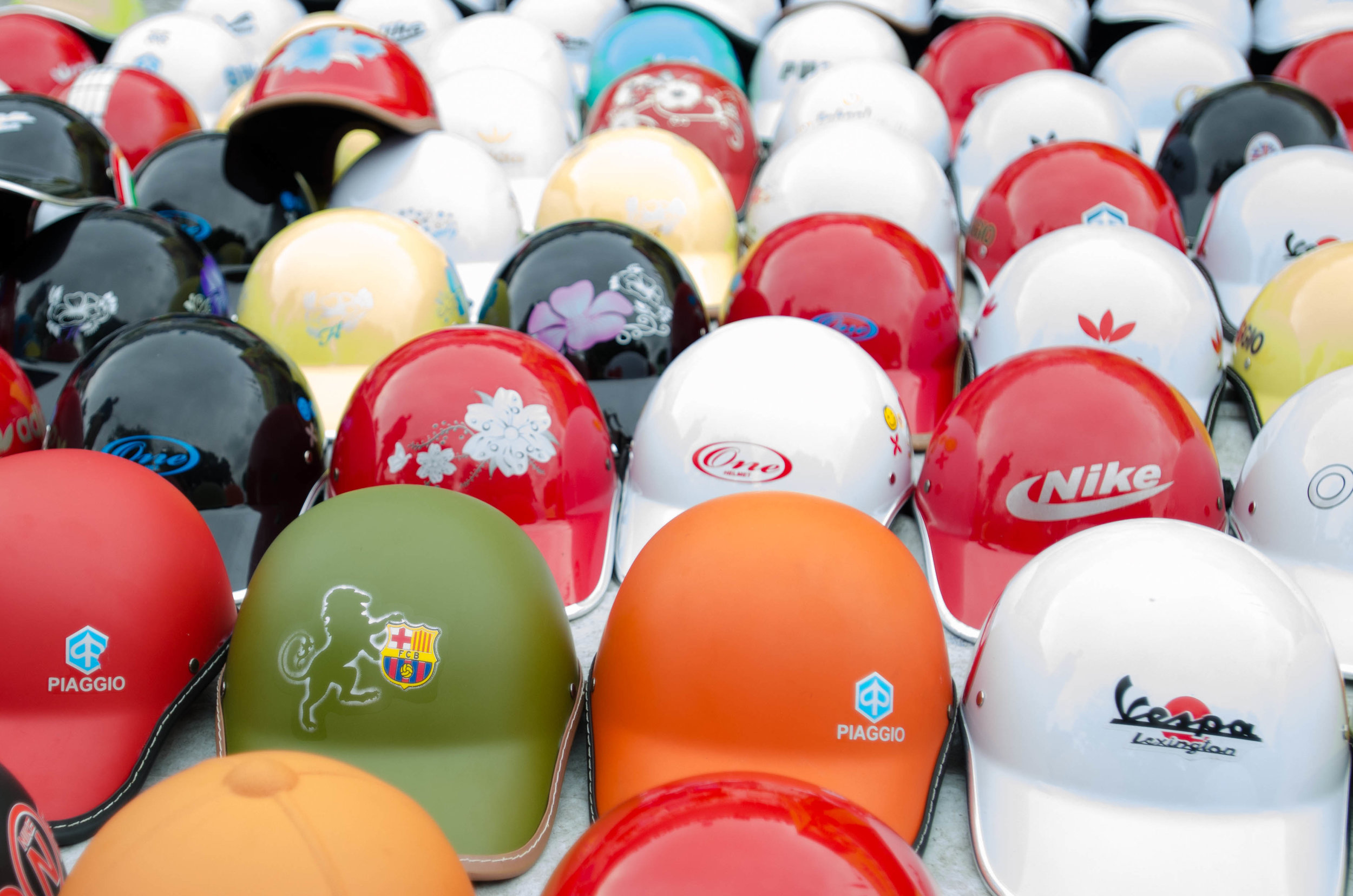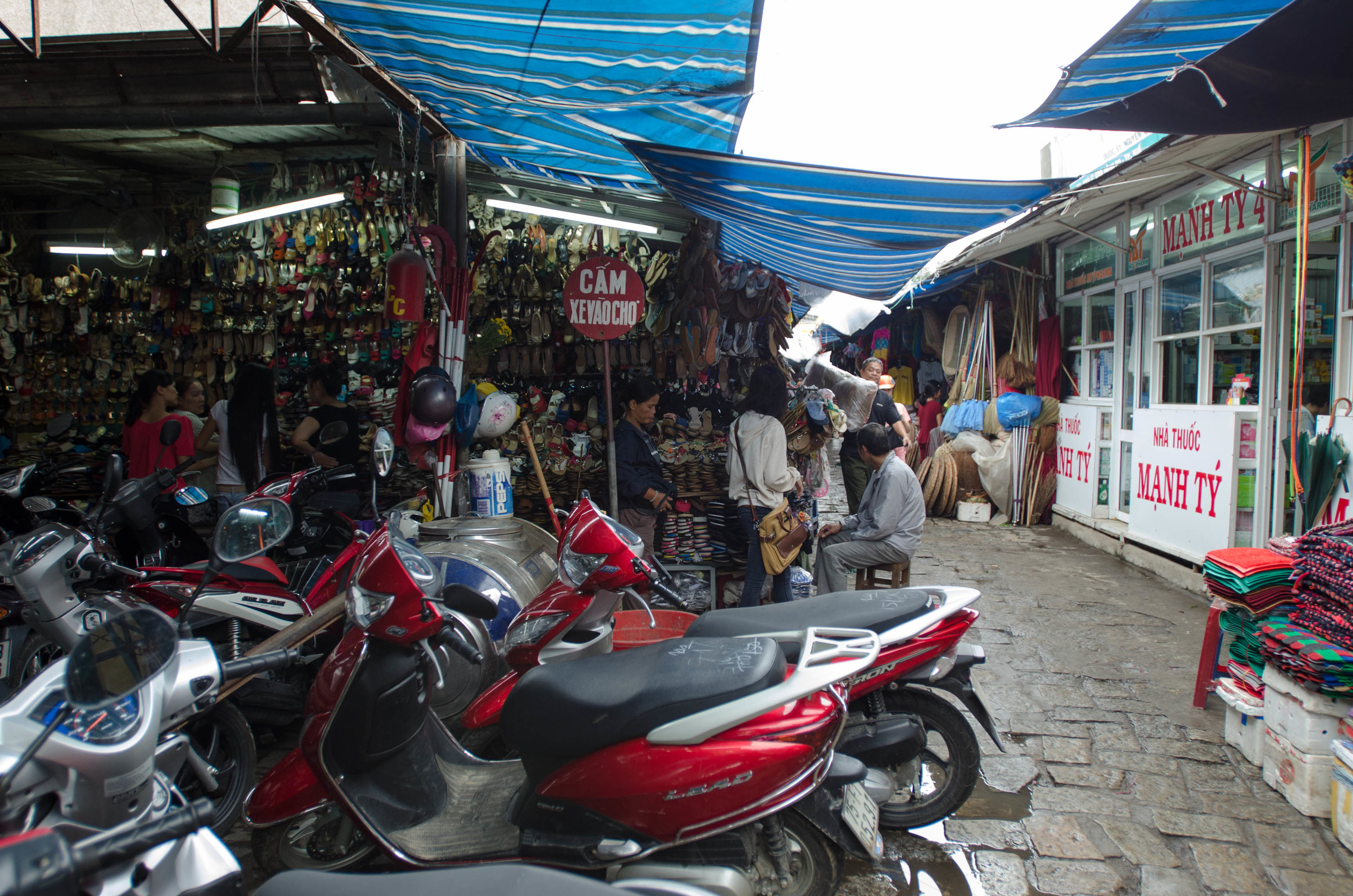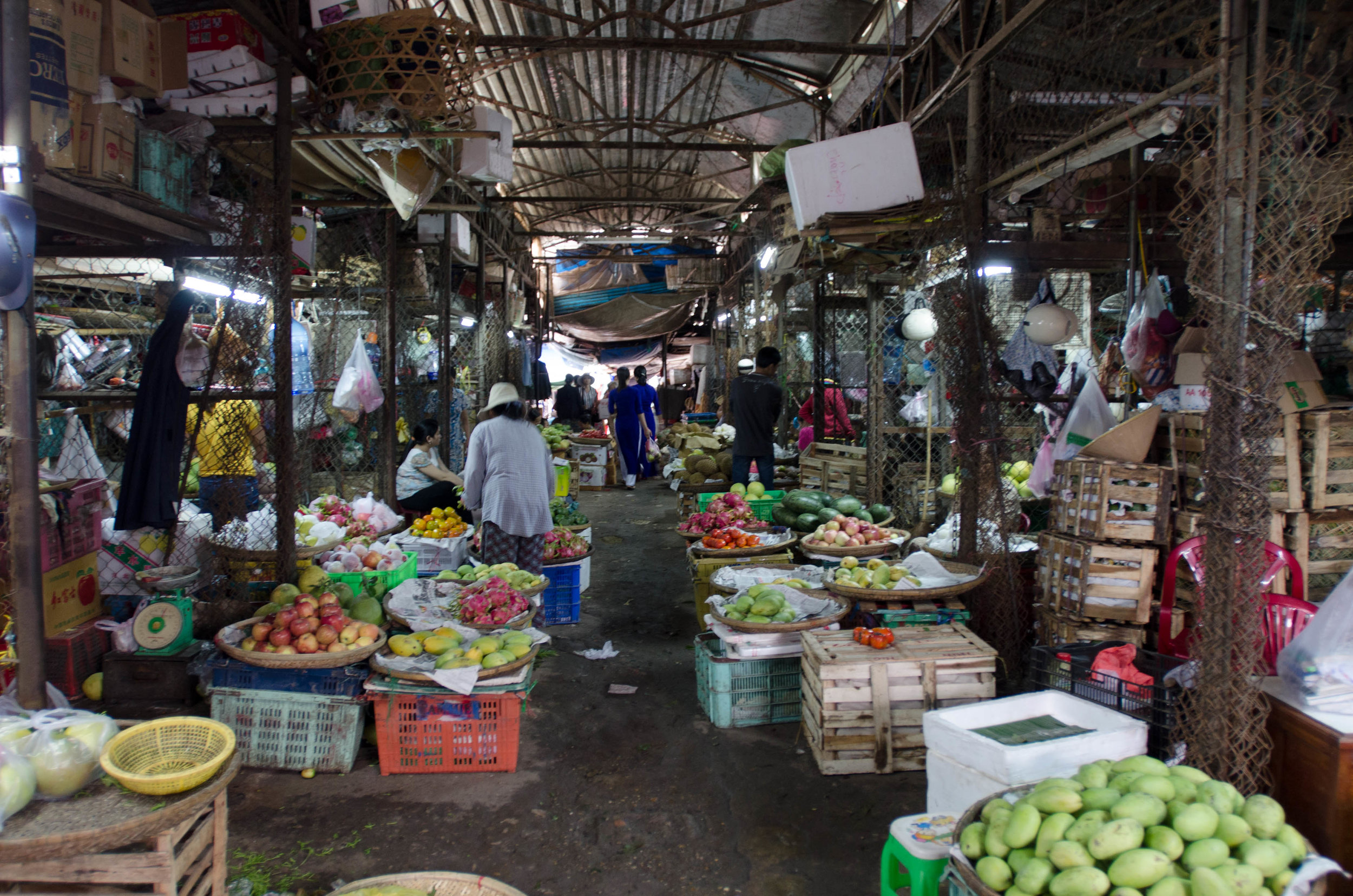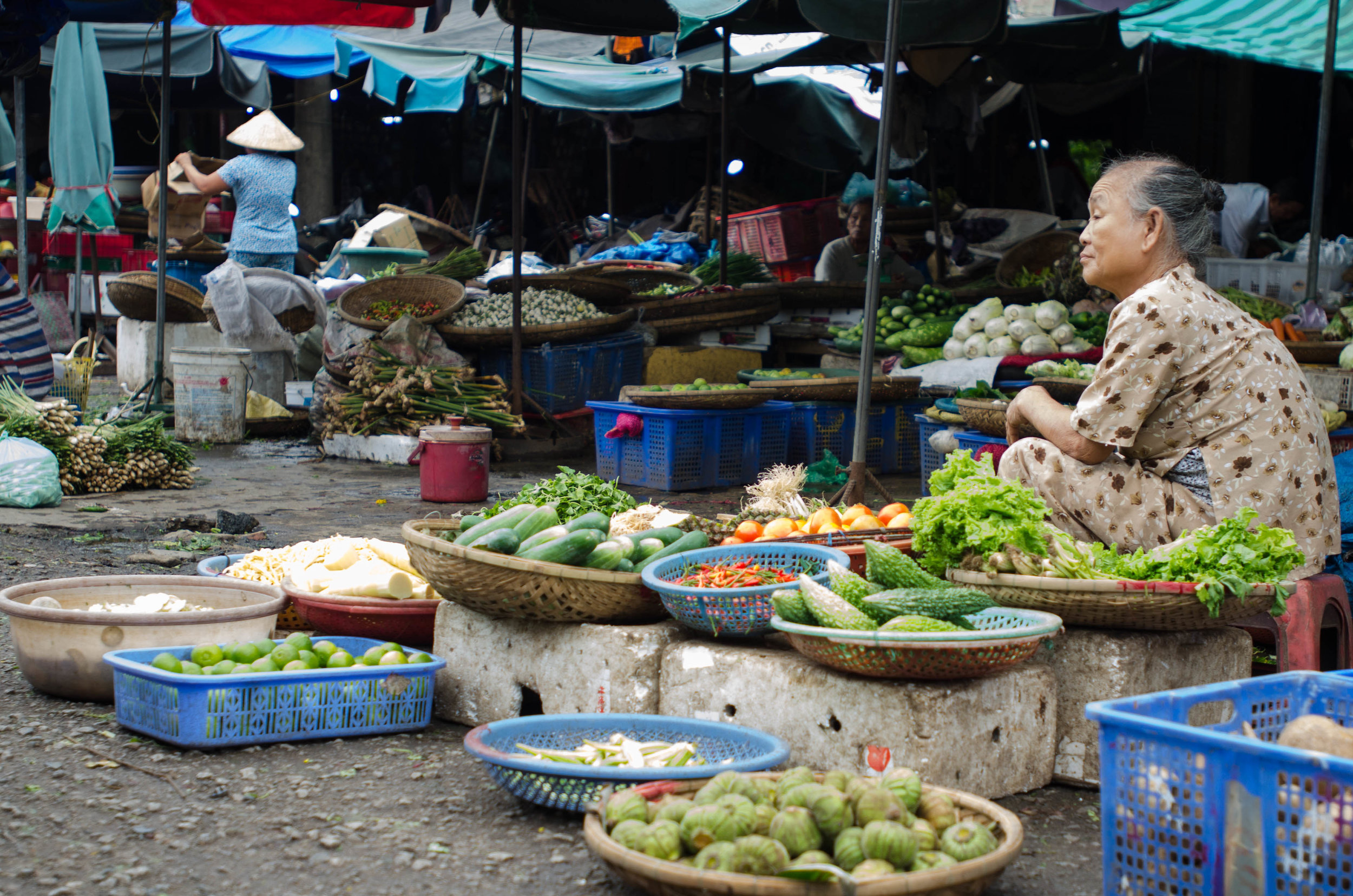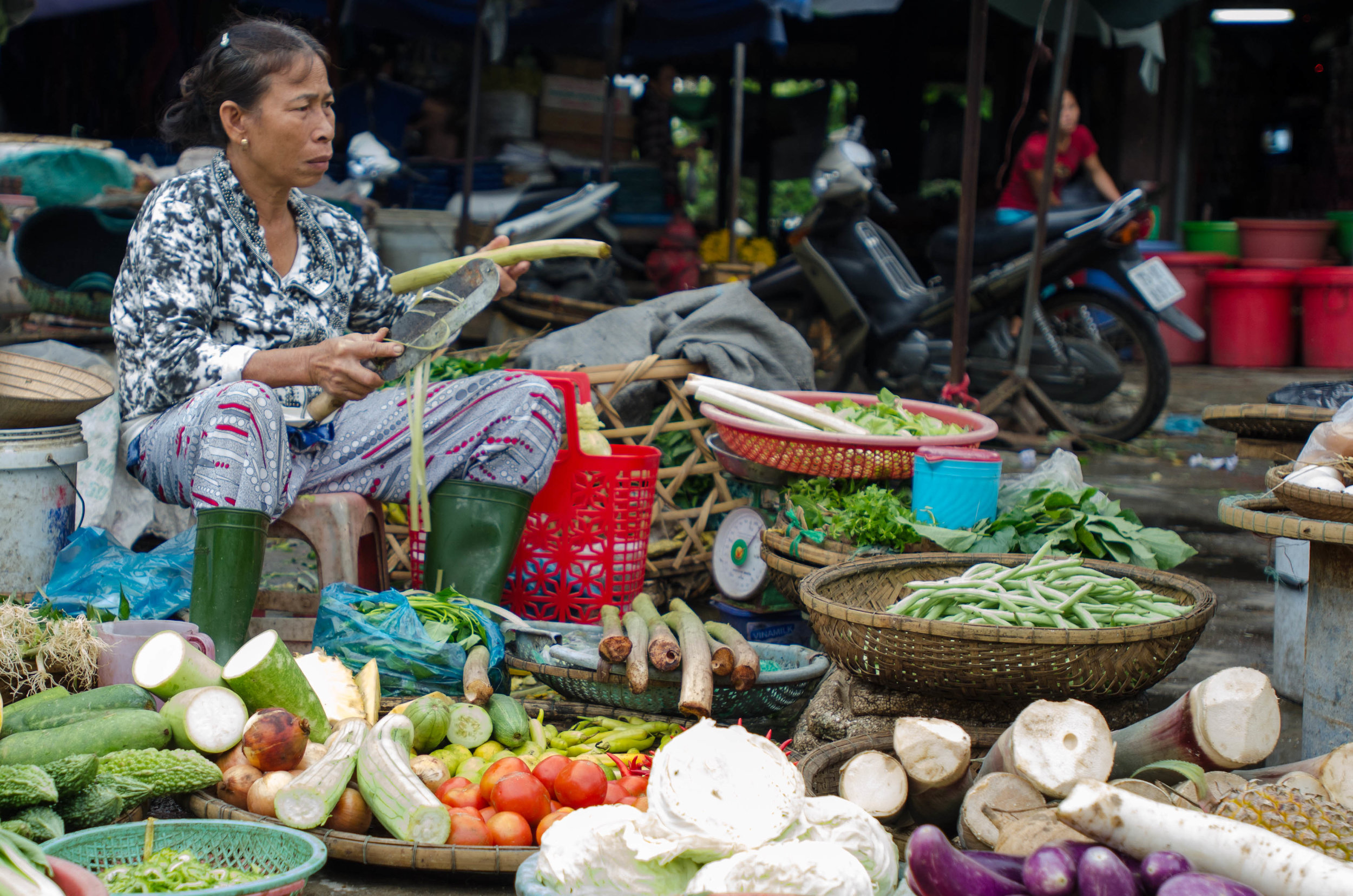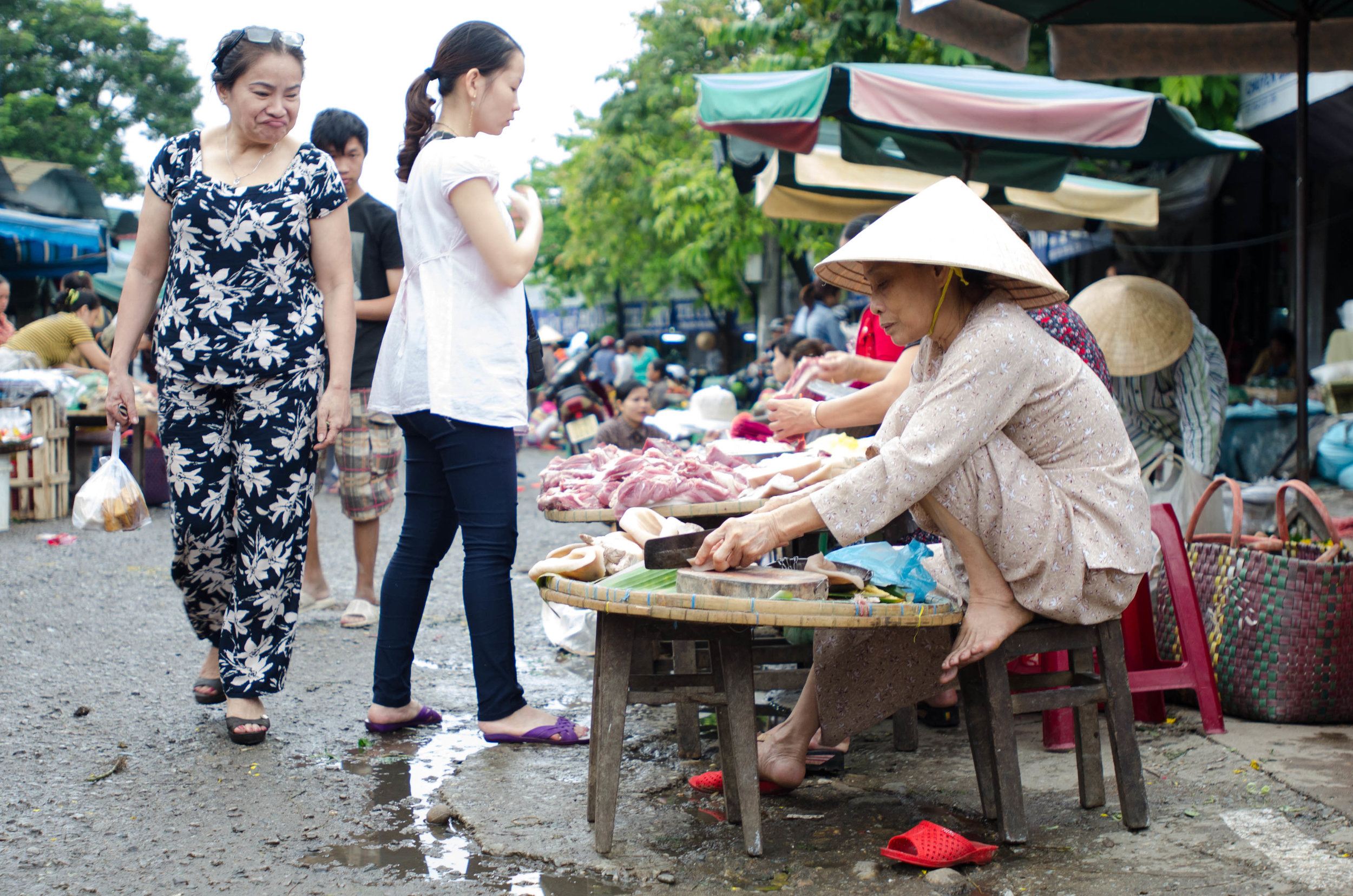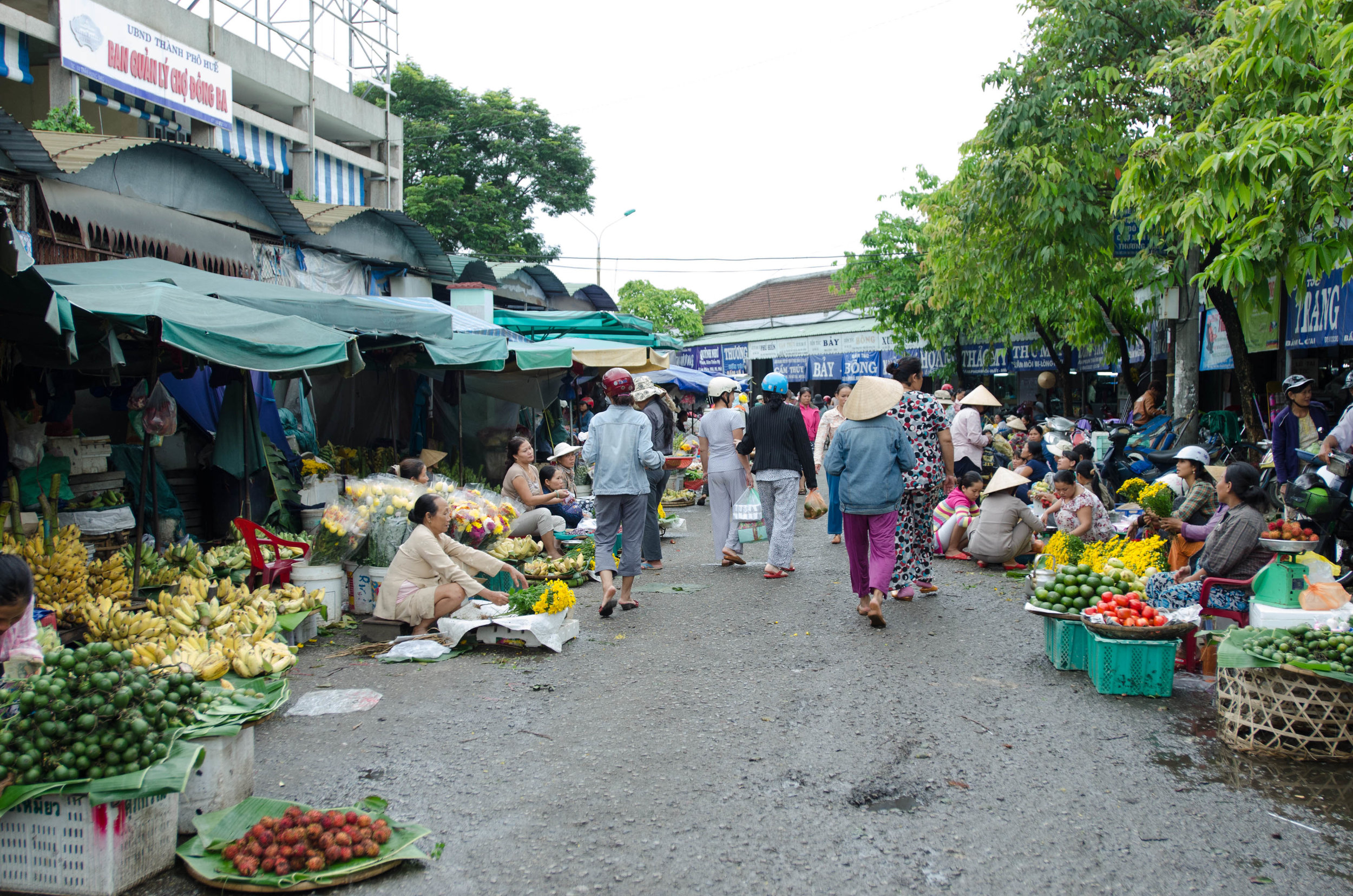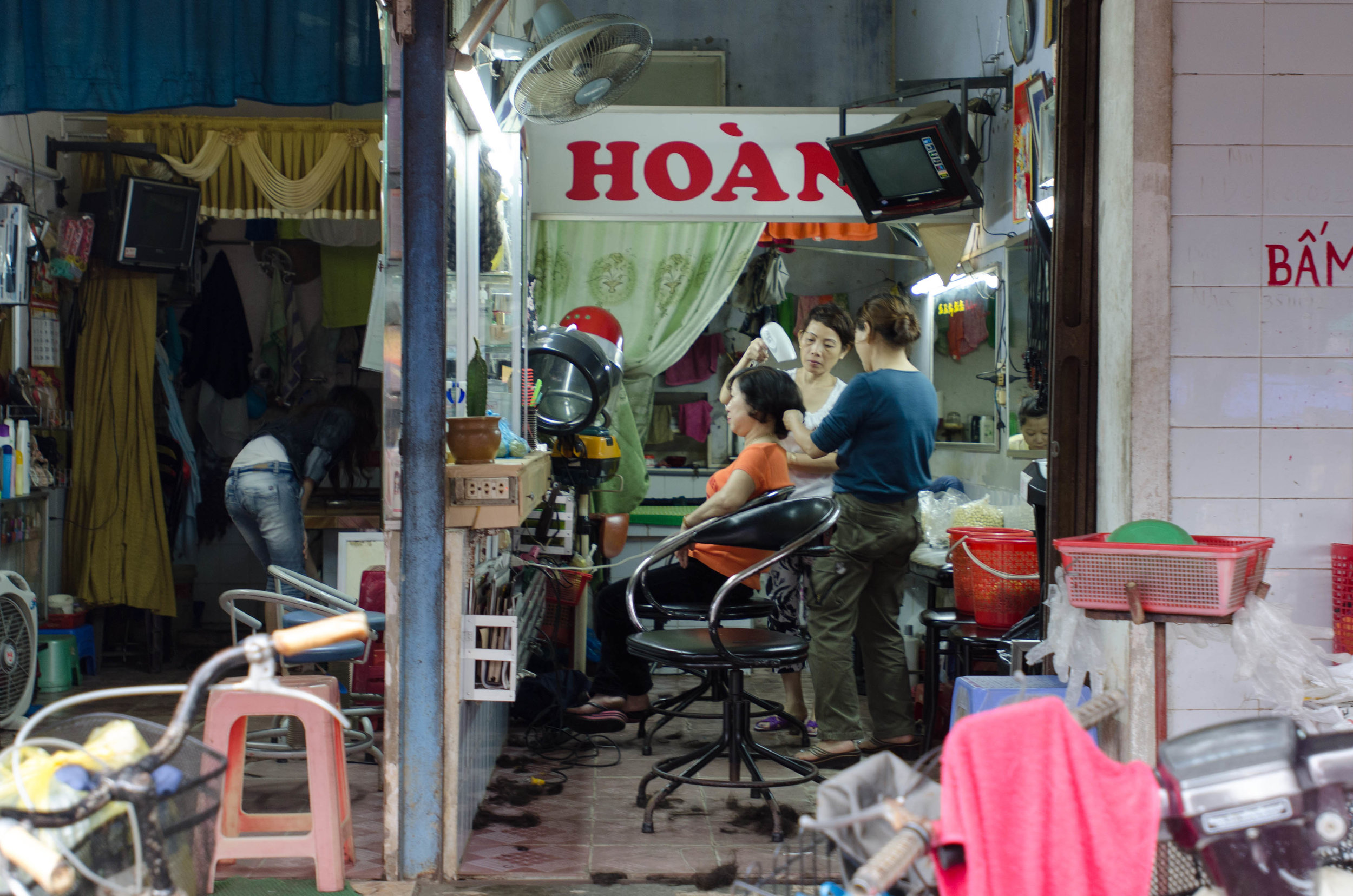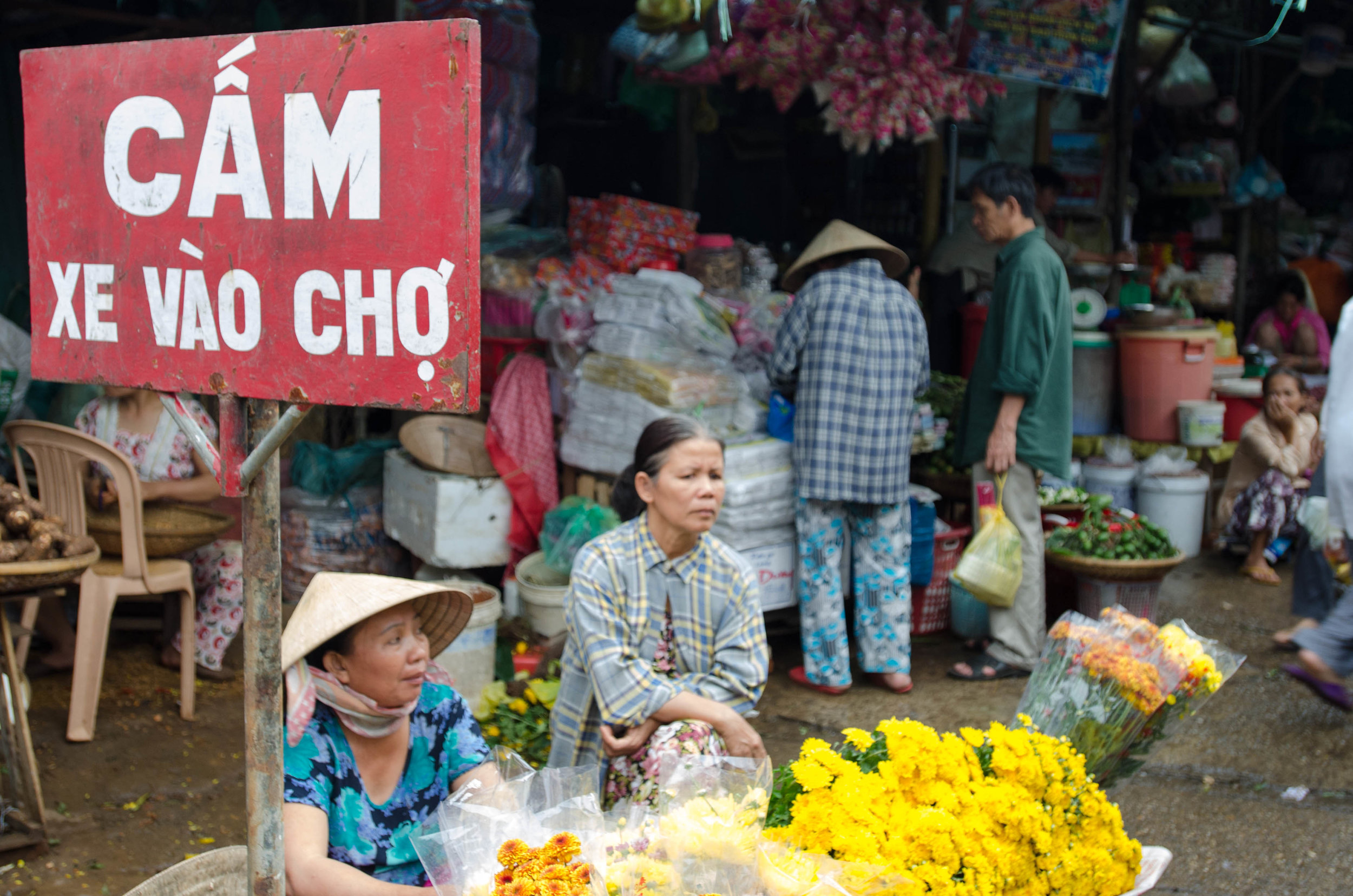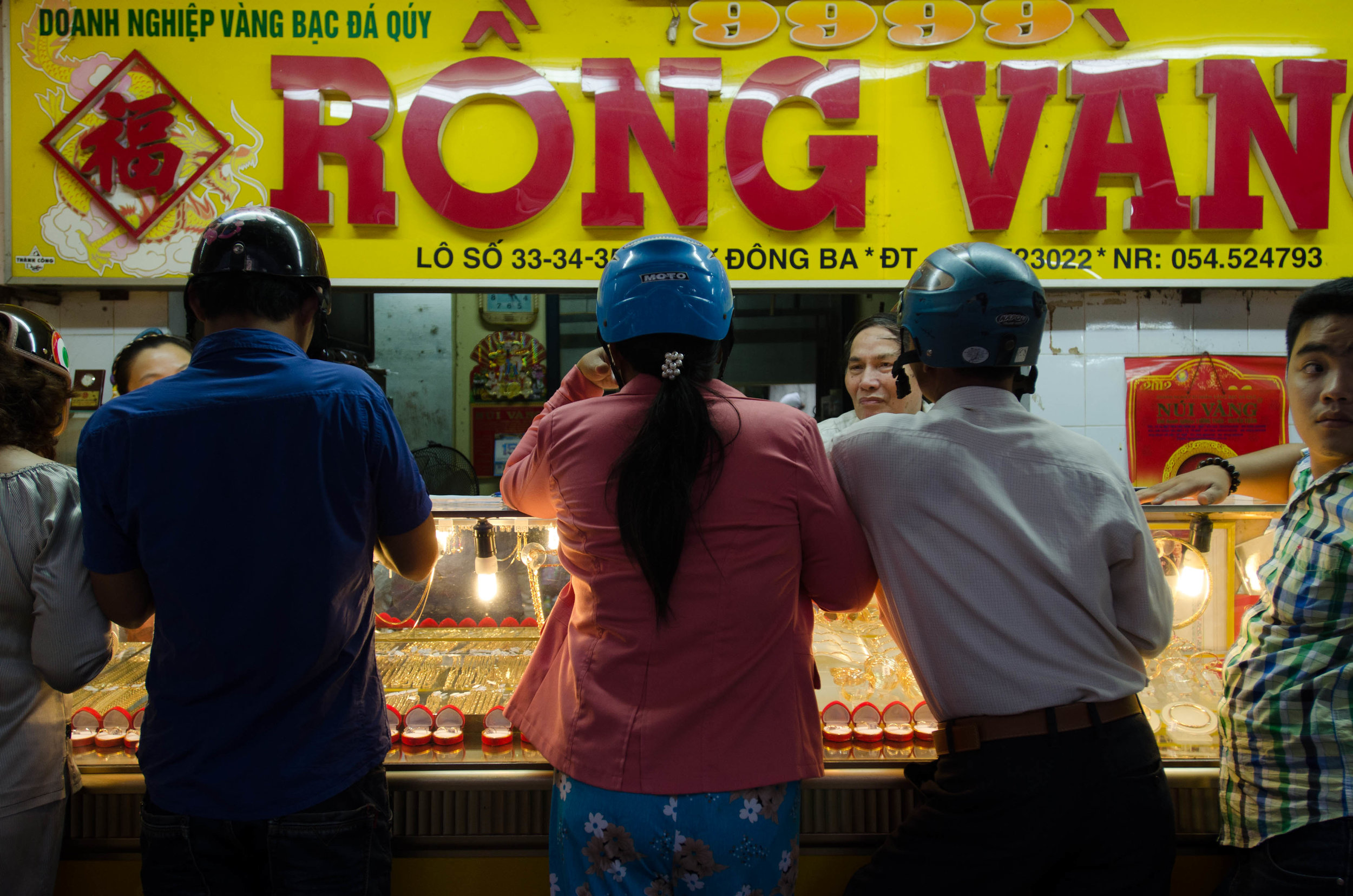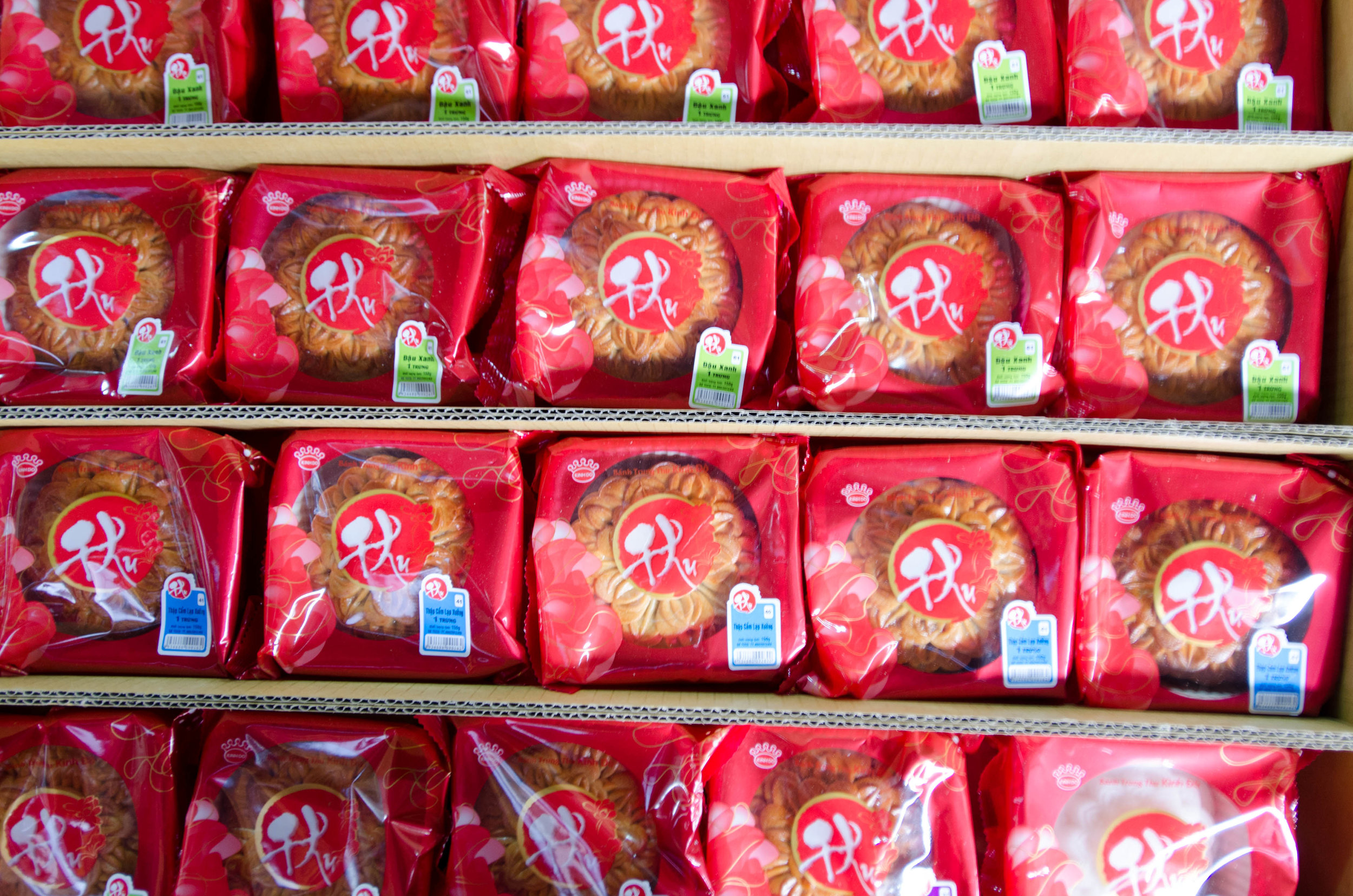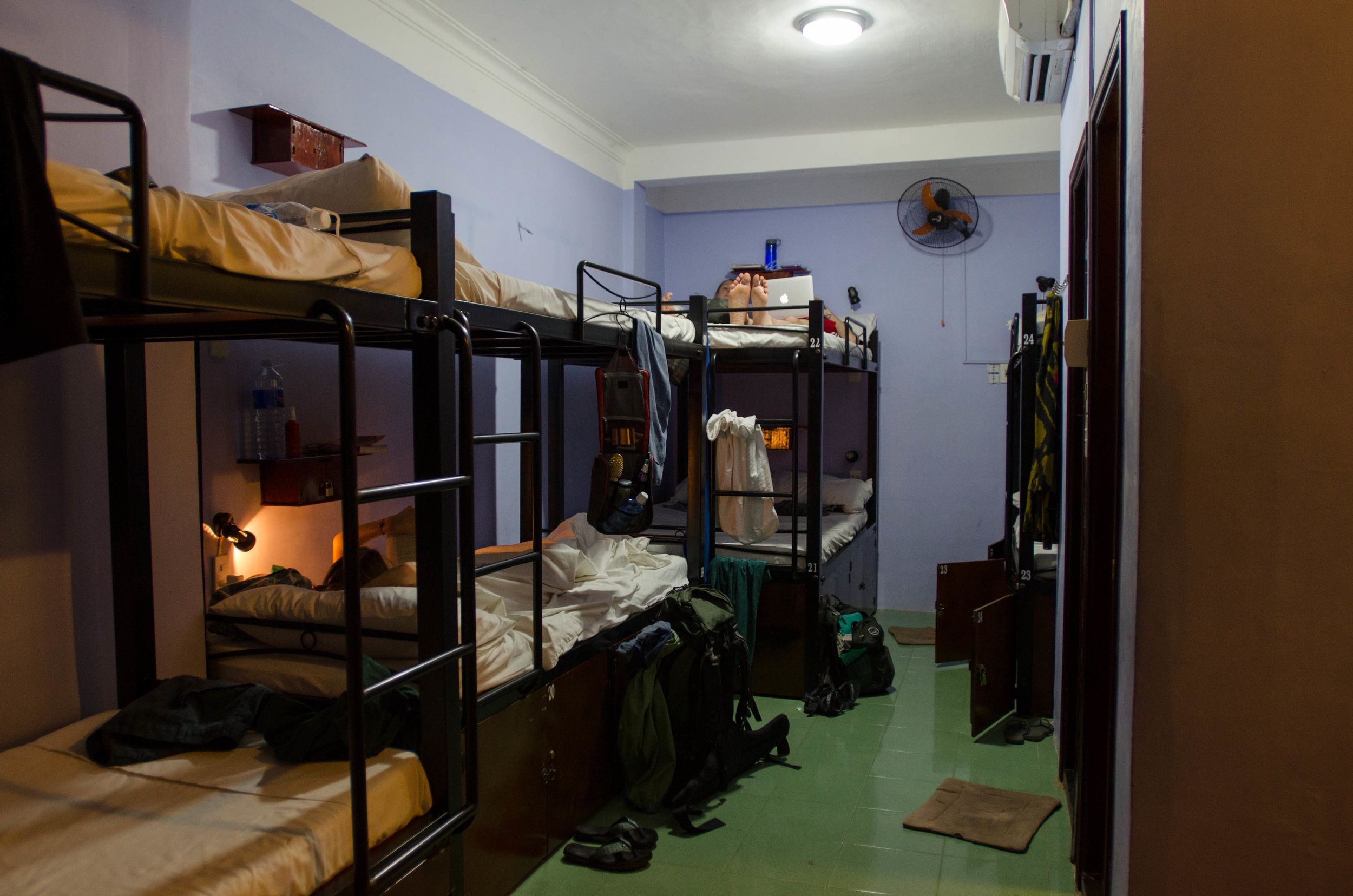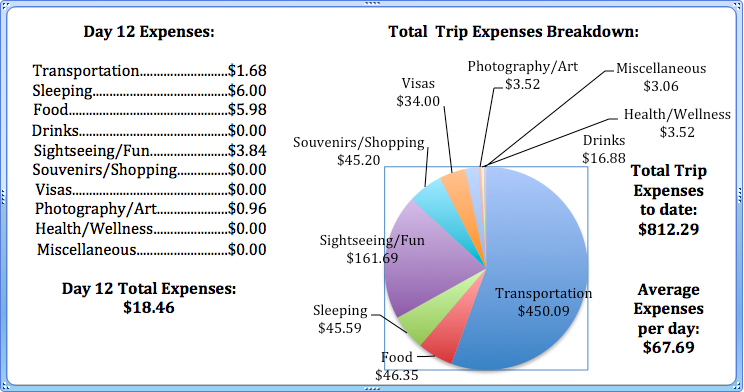Maybe you’ve seen pictures of the Pamukkale travertines, the beautiful aqua blue water against the white mineral deposits that used to be something of the face of tourism in Turkey. I did, and being in Turkey, wanted to see them. It’s a bit of an illusion at first when you take off your shoes to walk up the sparkling white slope to the pool. You expect it to be slippery or cold even, but it’s neither. It’s rough (almost like walking on pumice stone and in some places it’s cool due to water or shade, yet in others it’s warm due to the sun sparkling over its surface or warmer spring water running over it. It’s breathtaking walking up and nothing like I’ve ever done before.

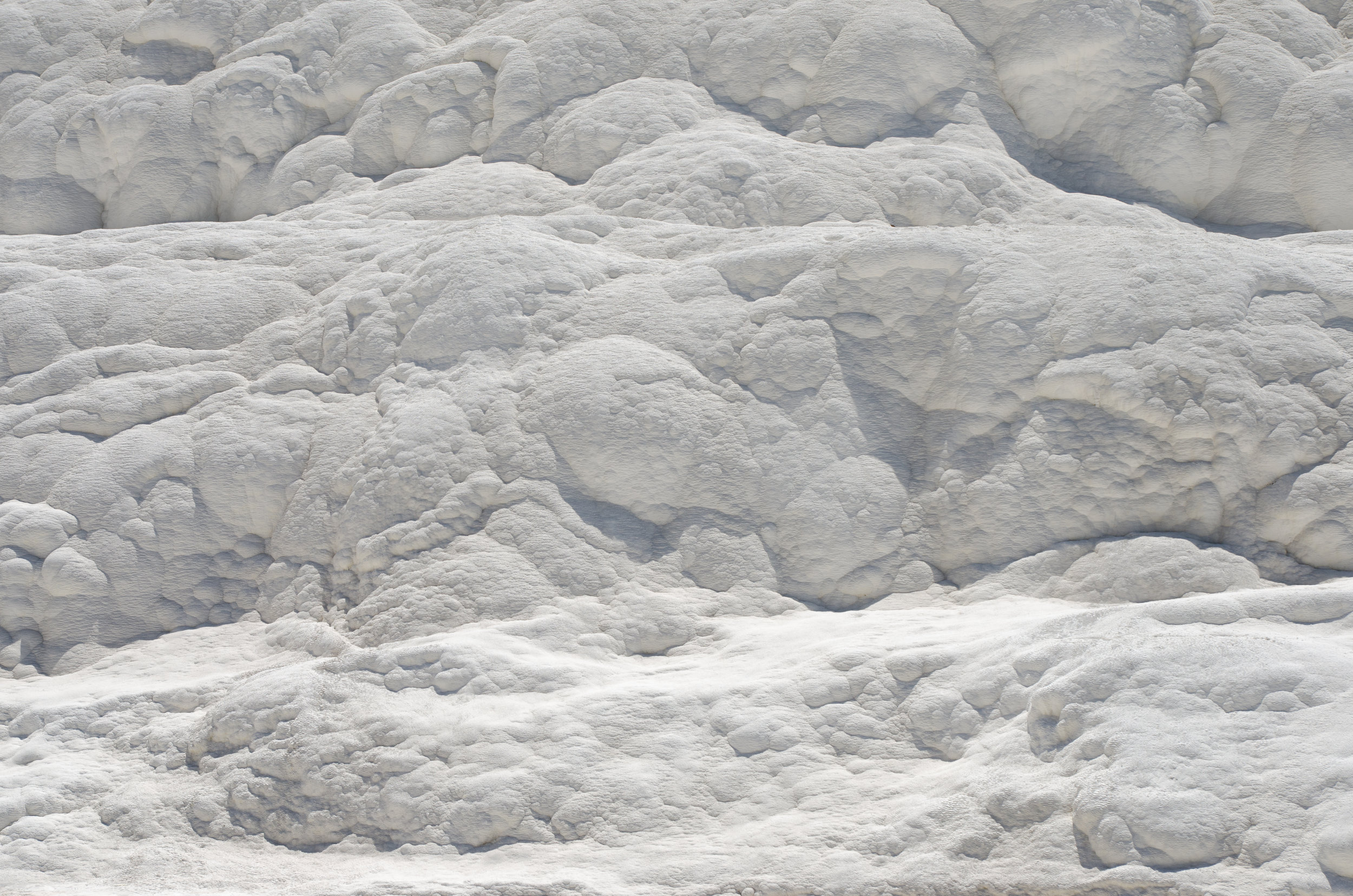

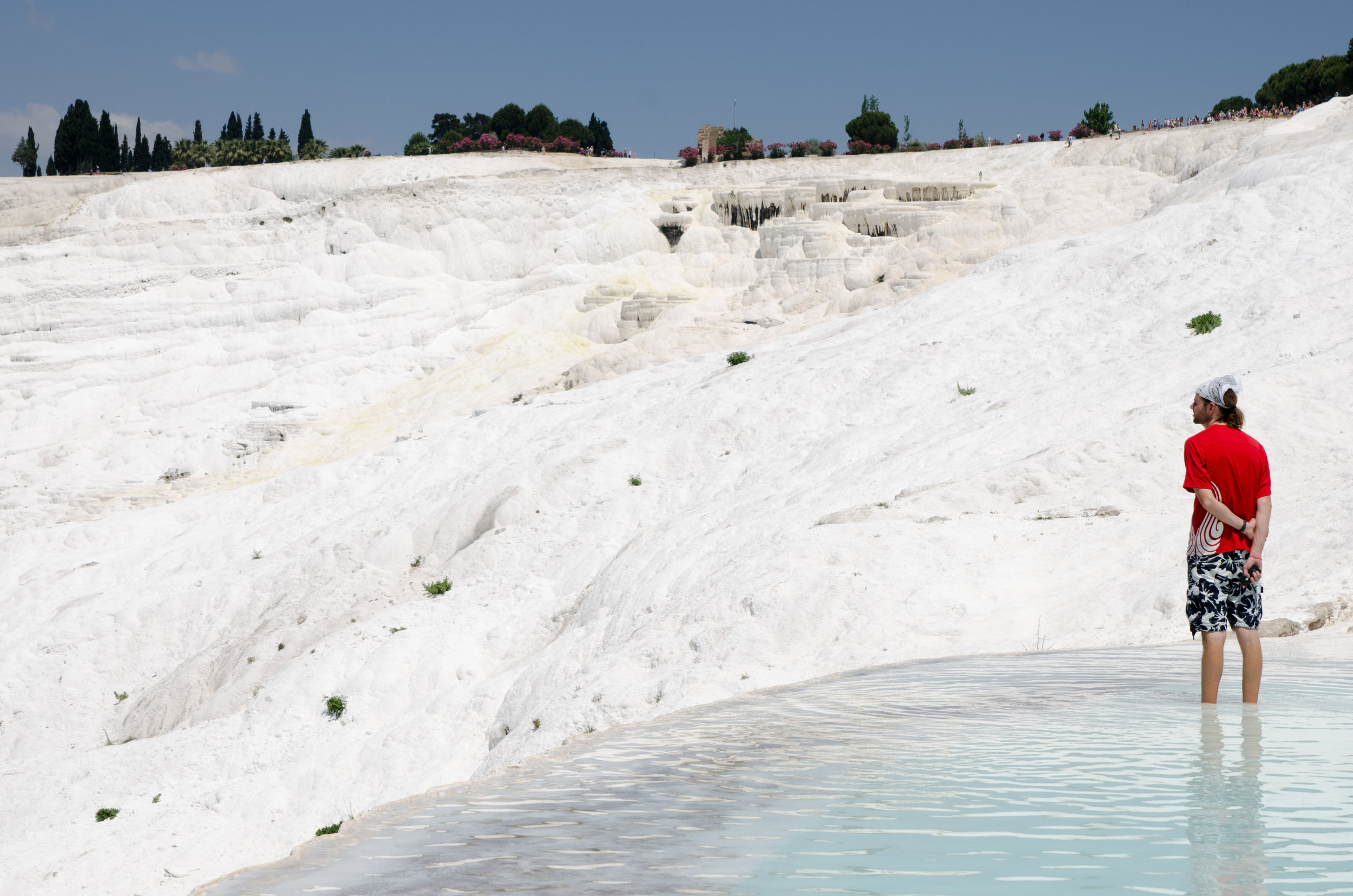

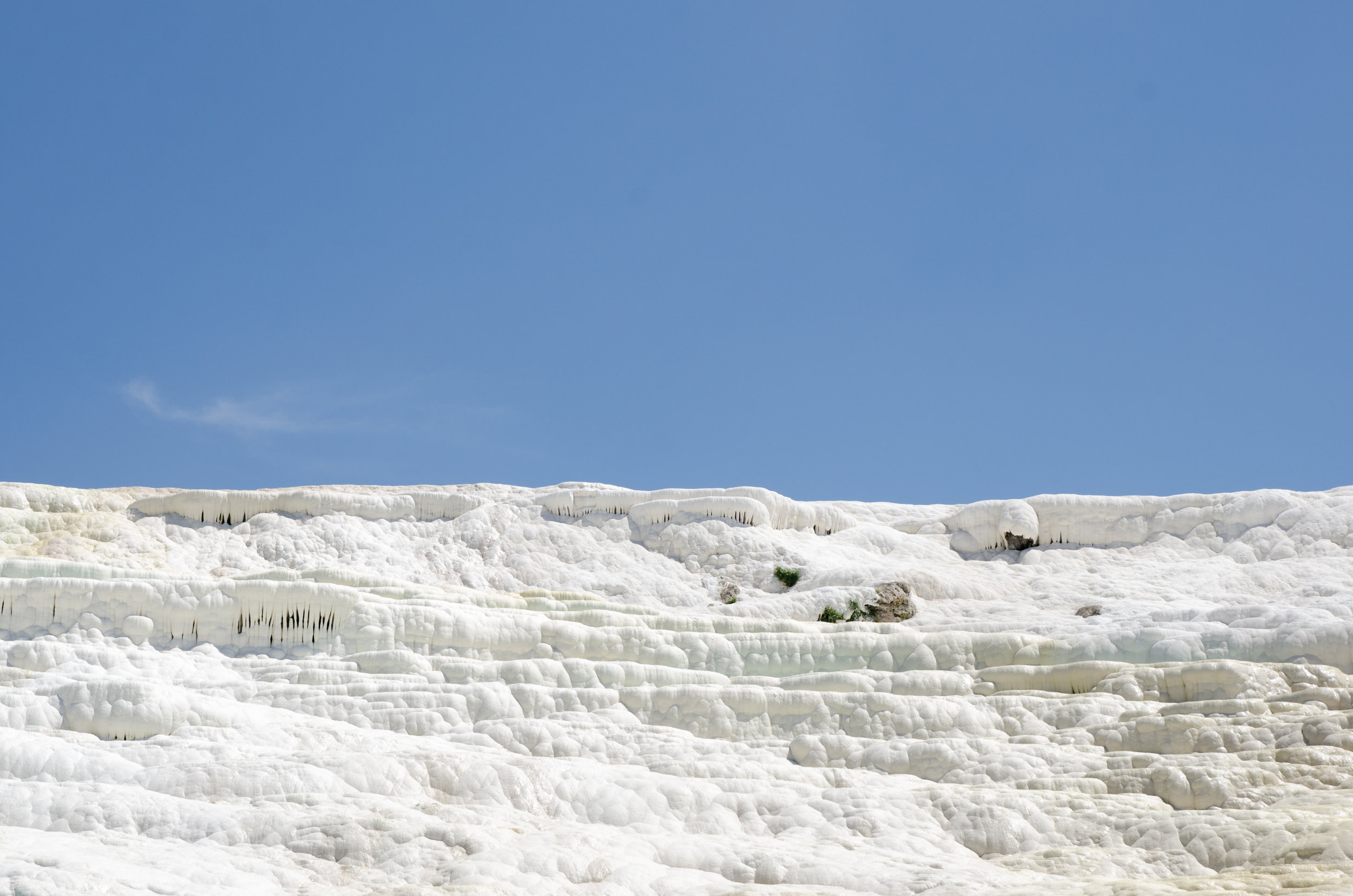

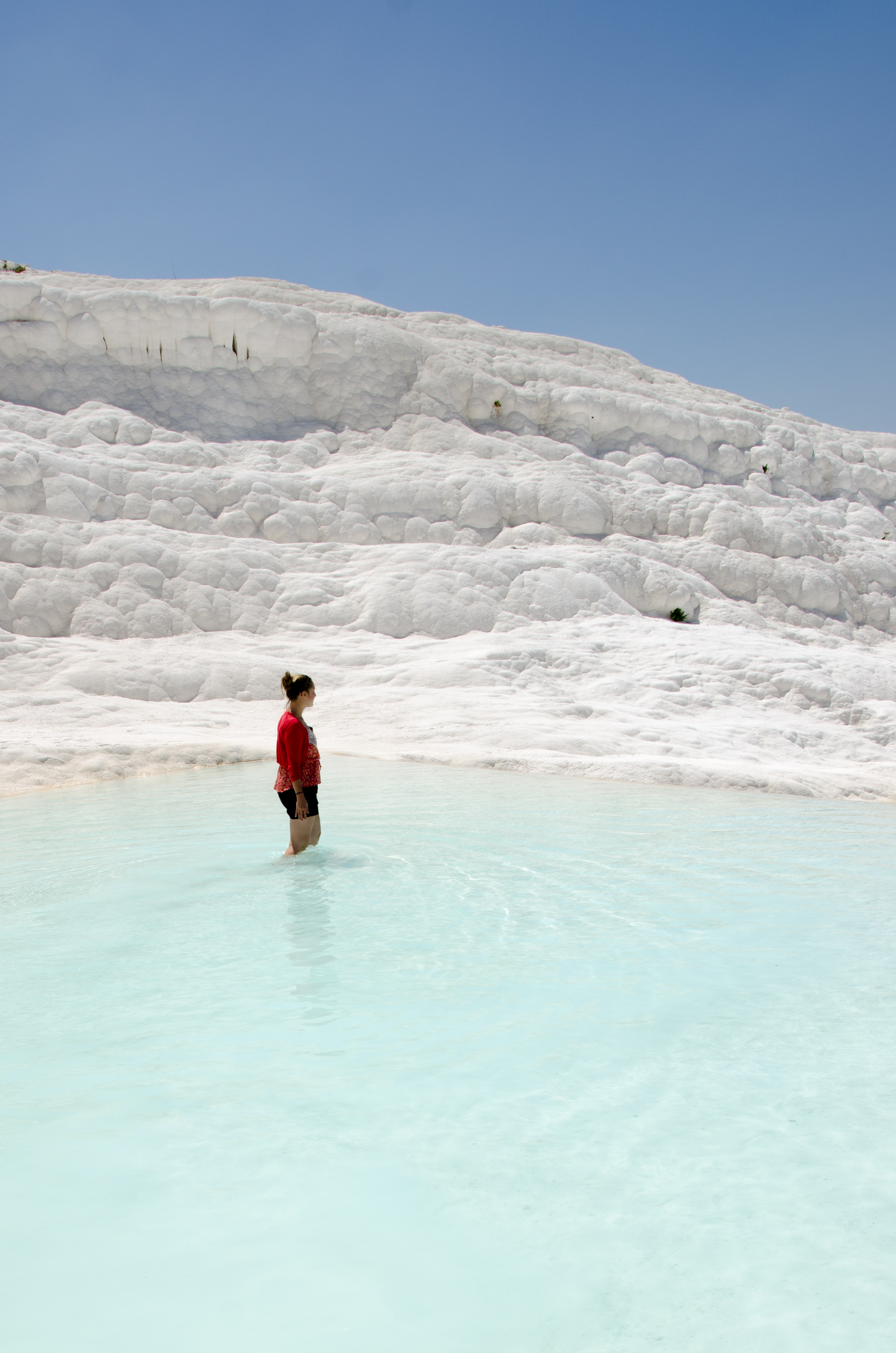
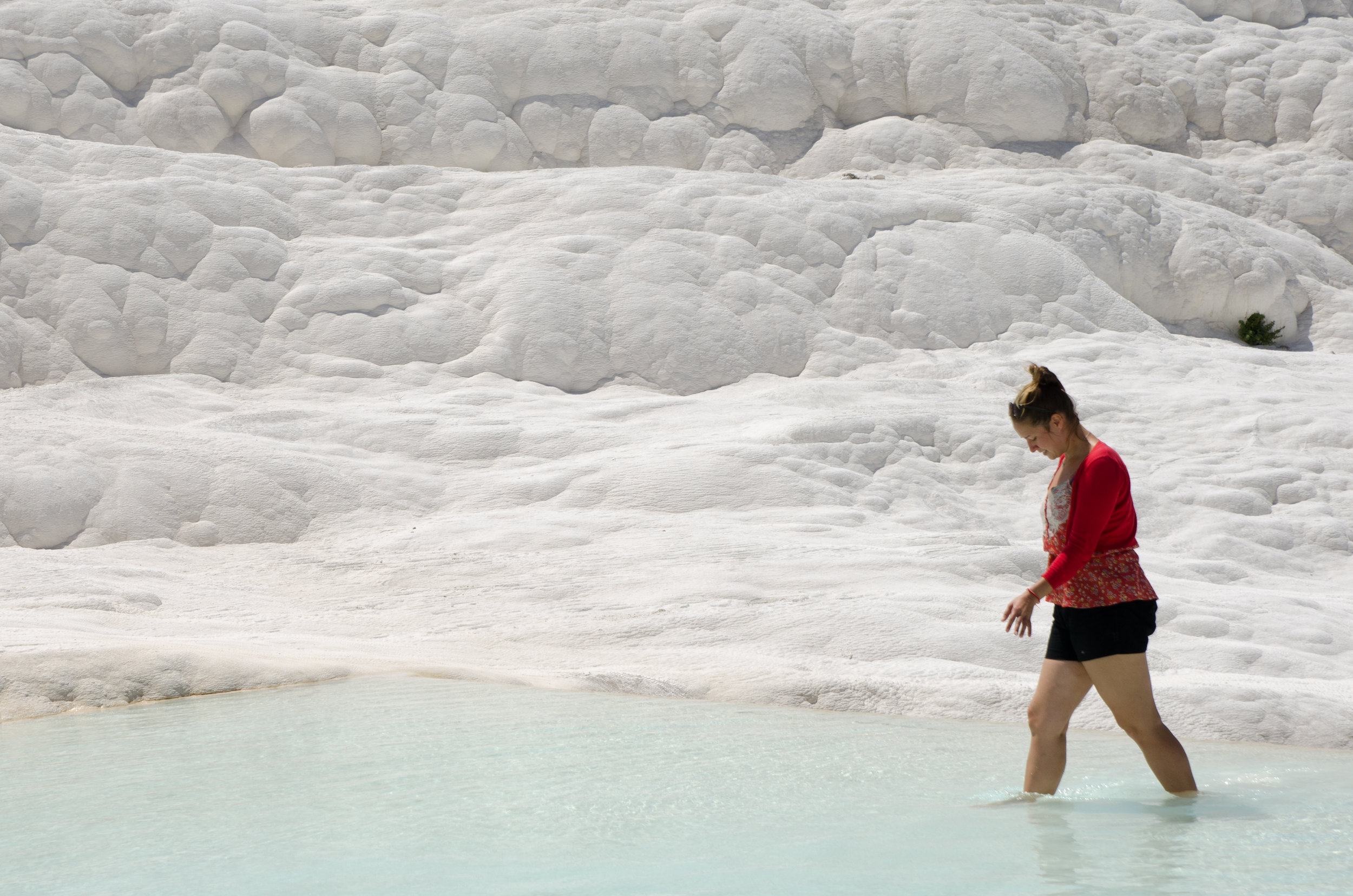
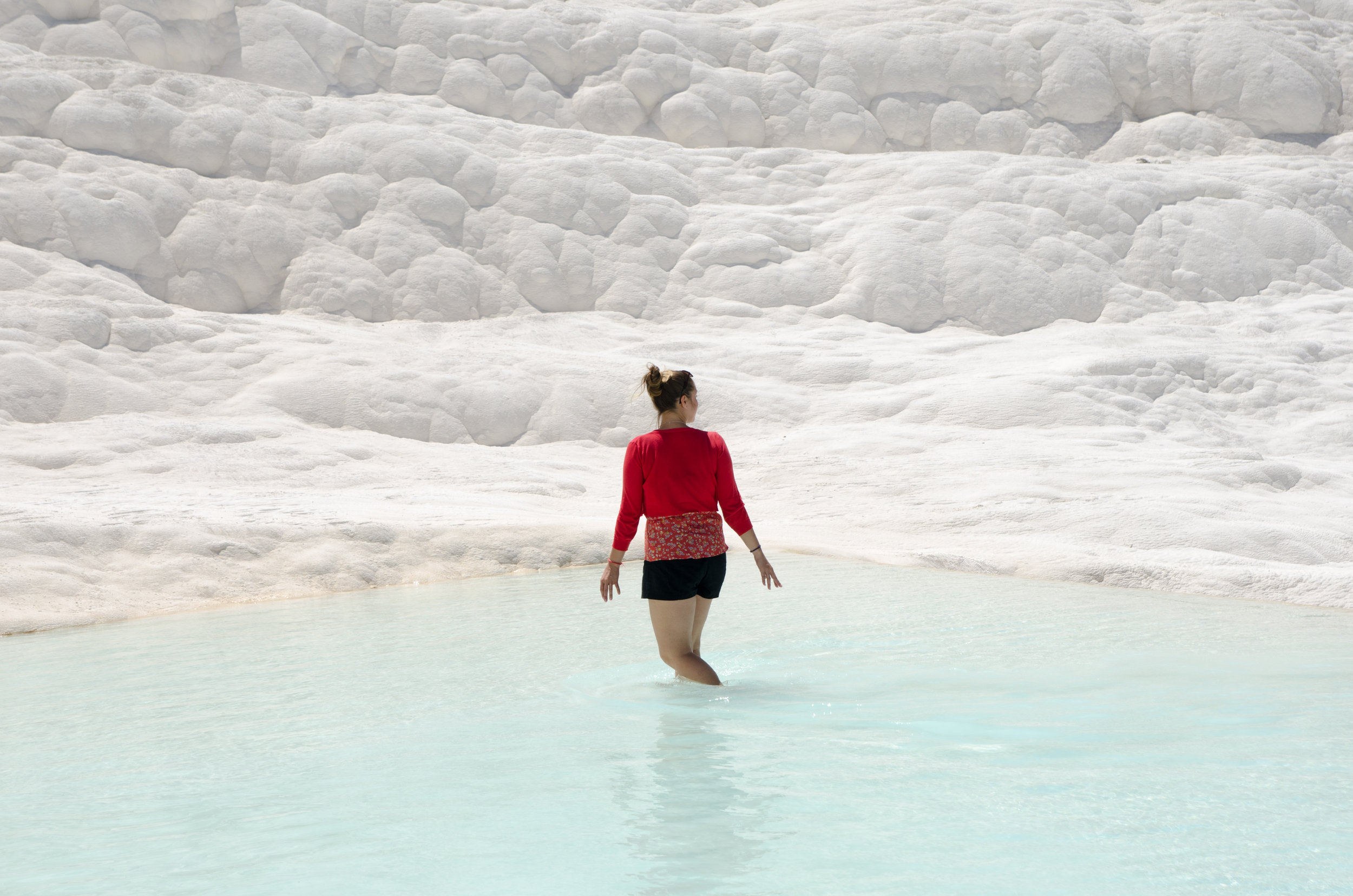
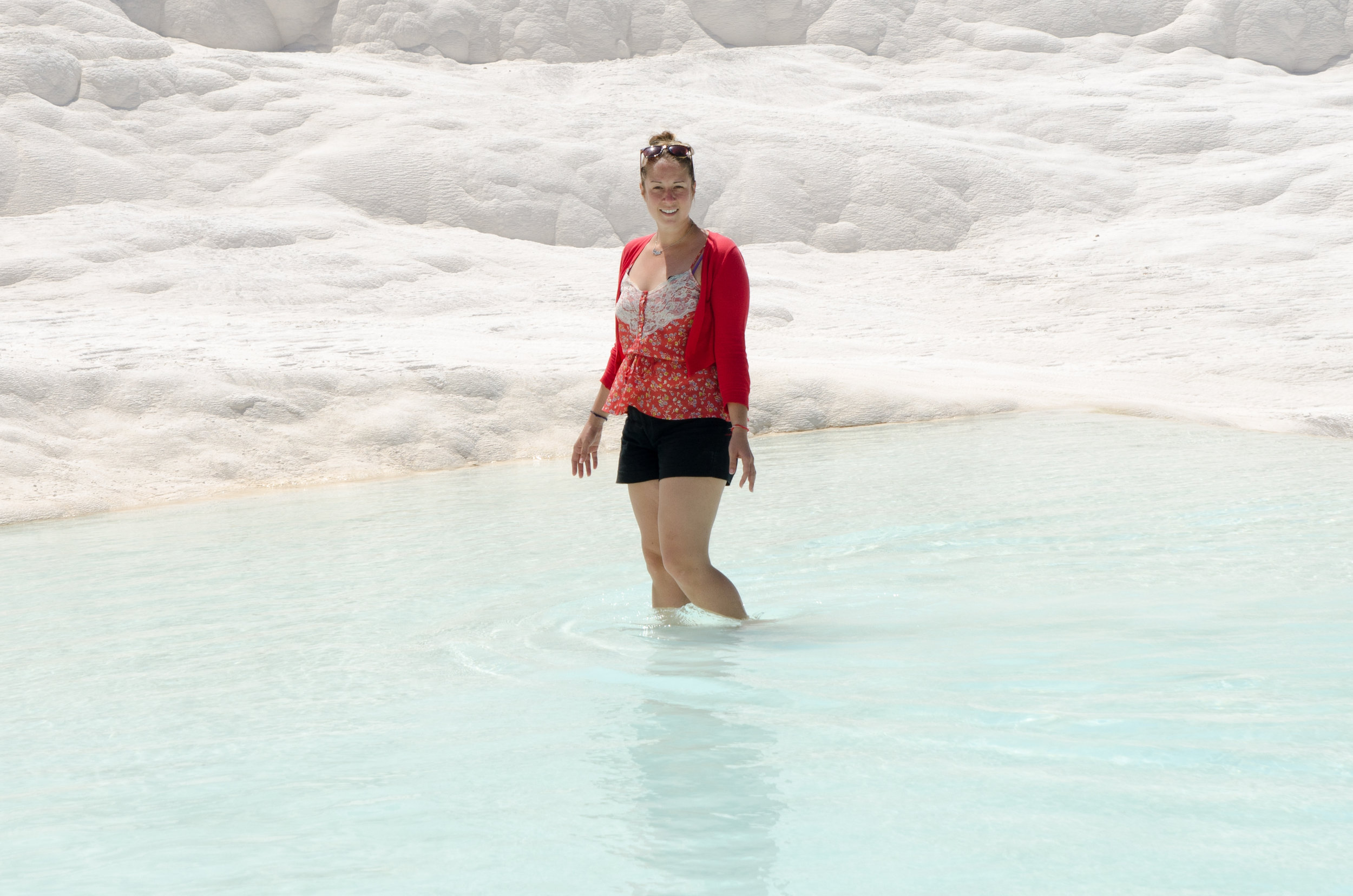
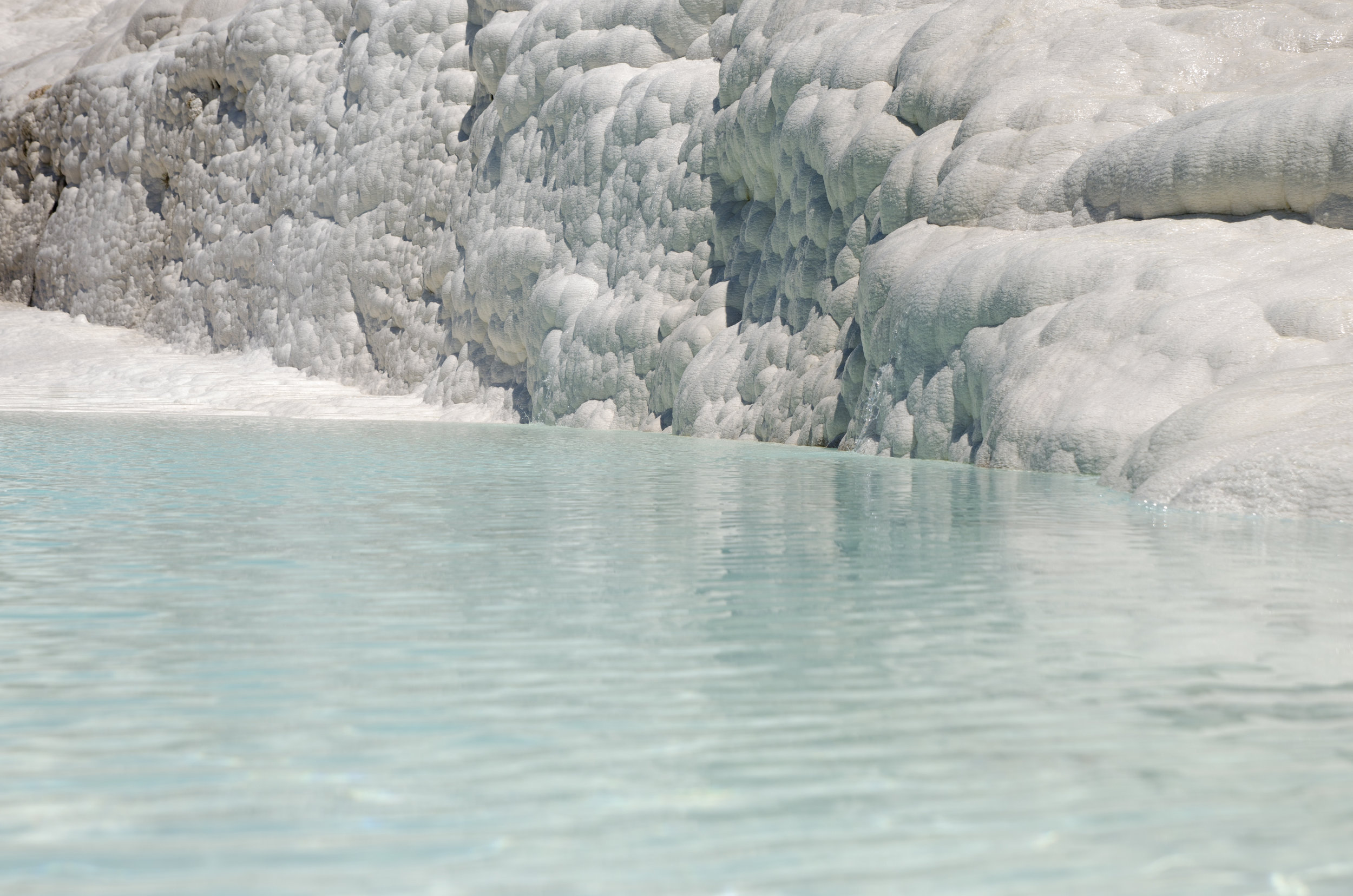
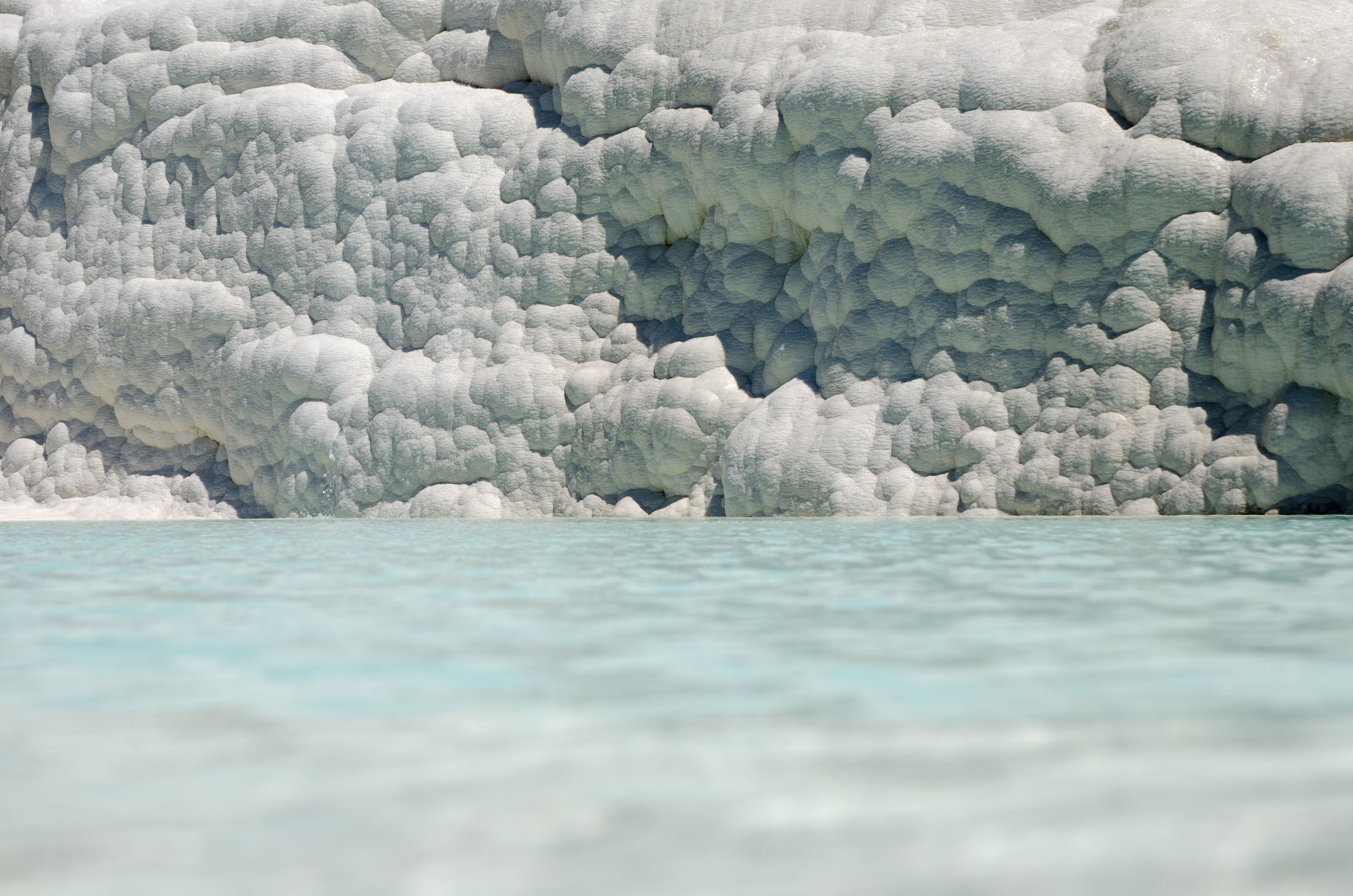

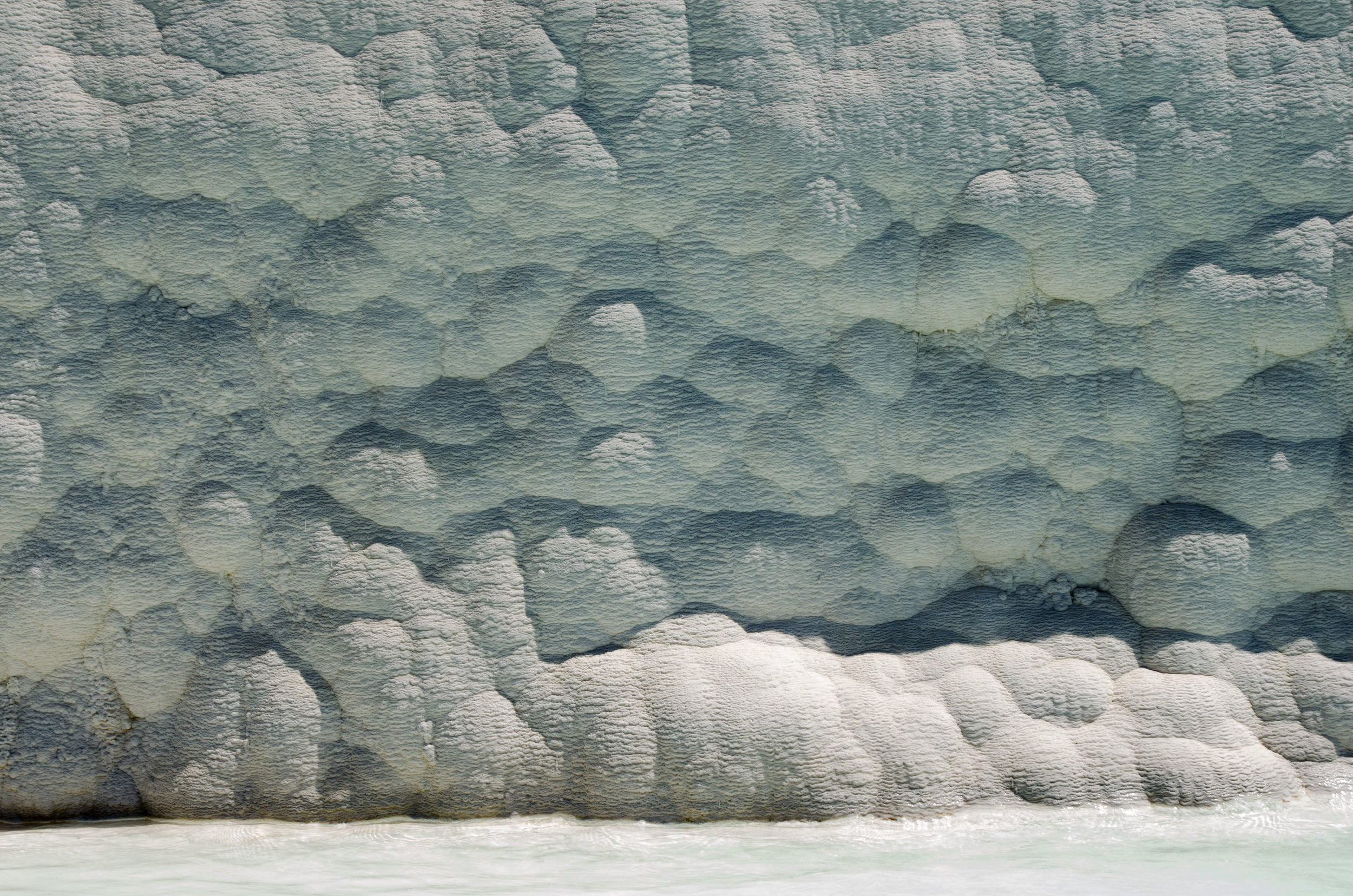
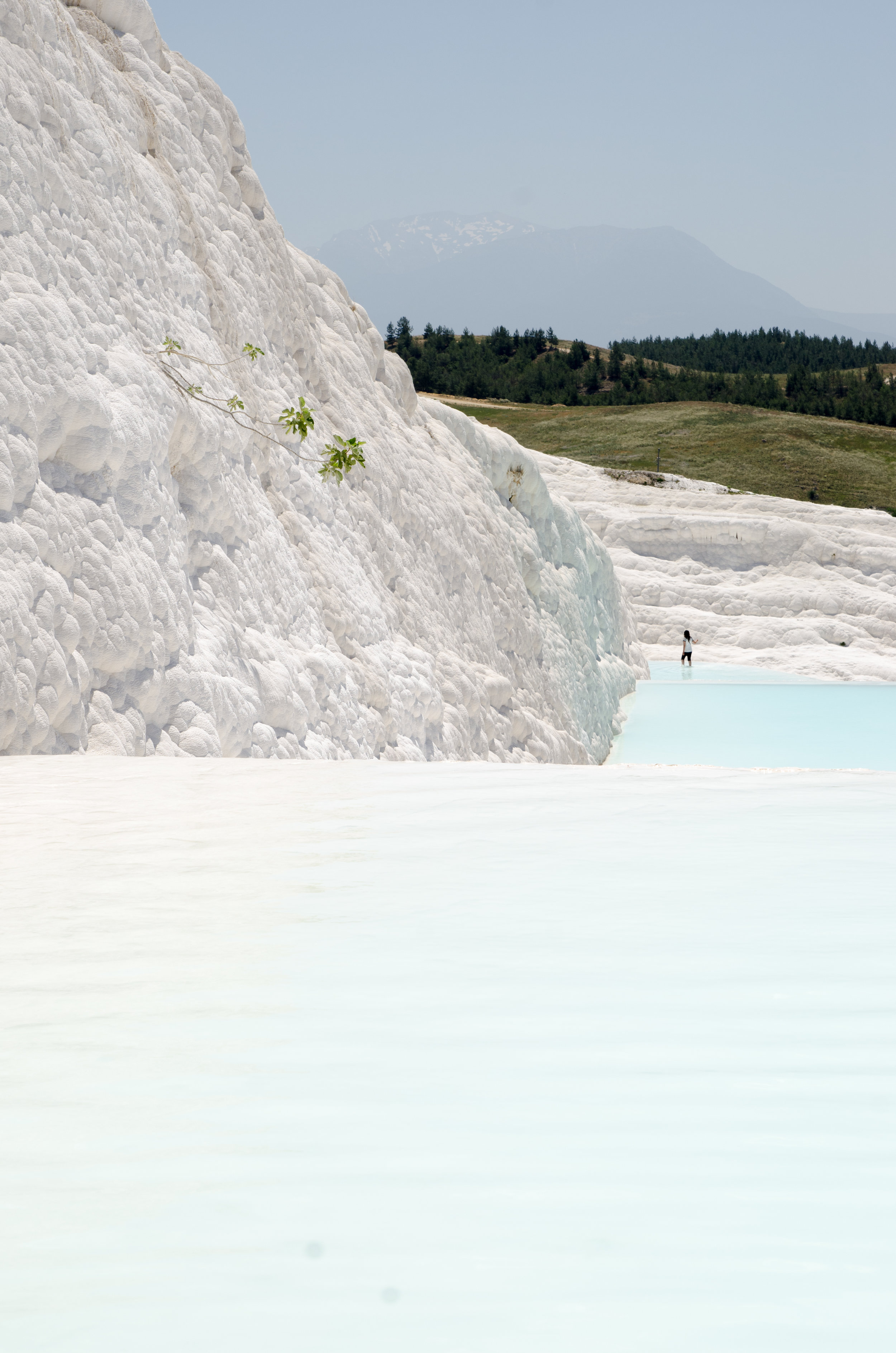

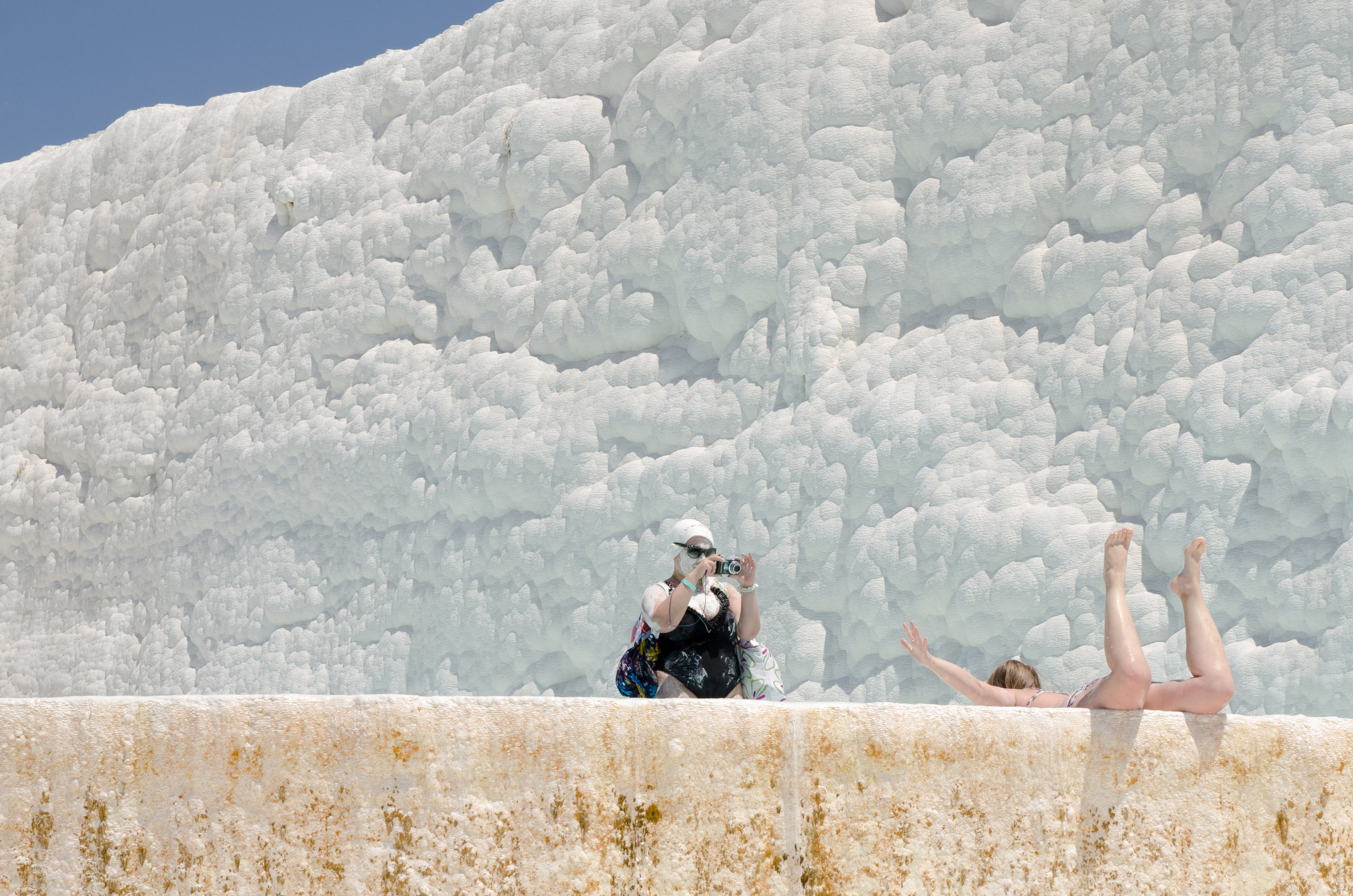
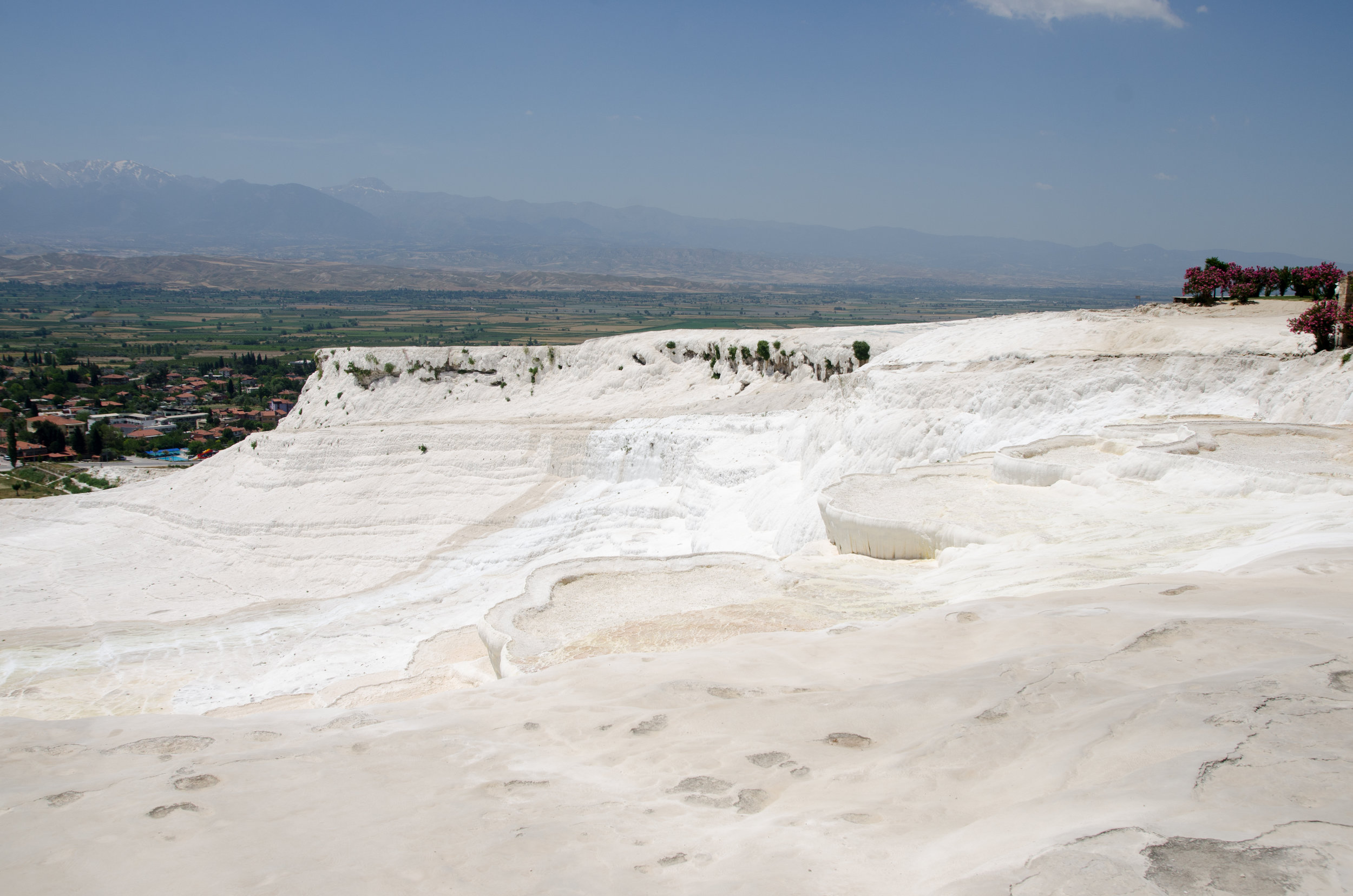
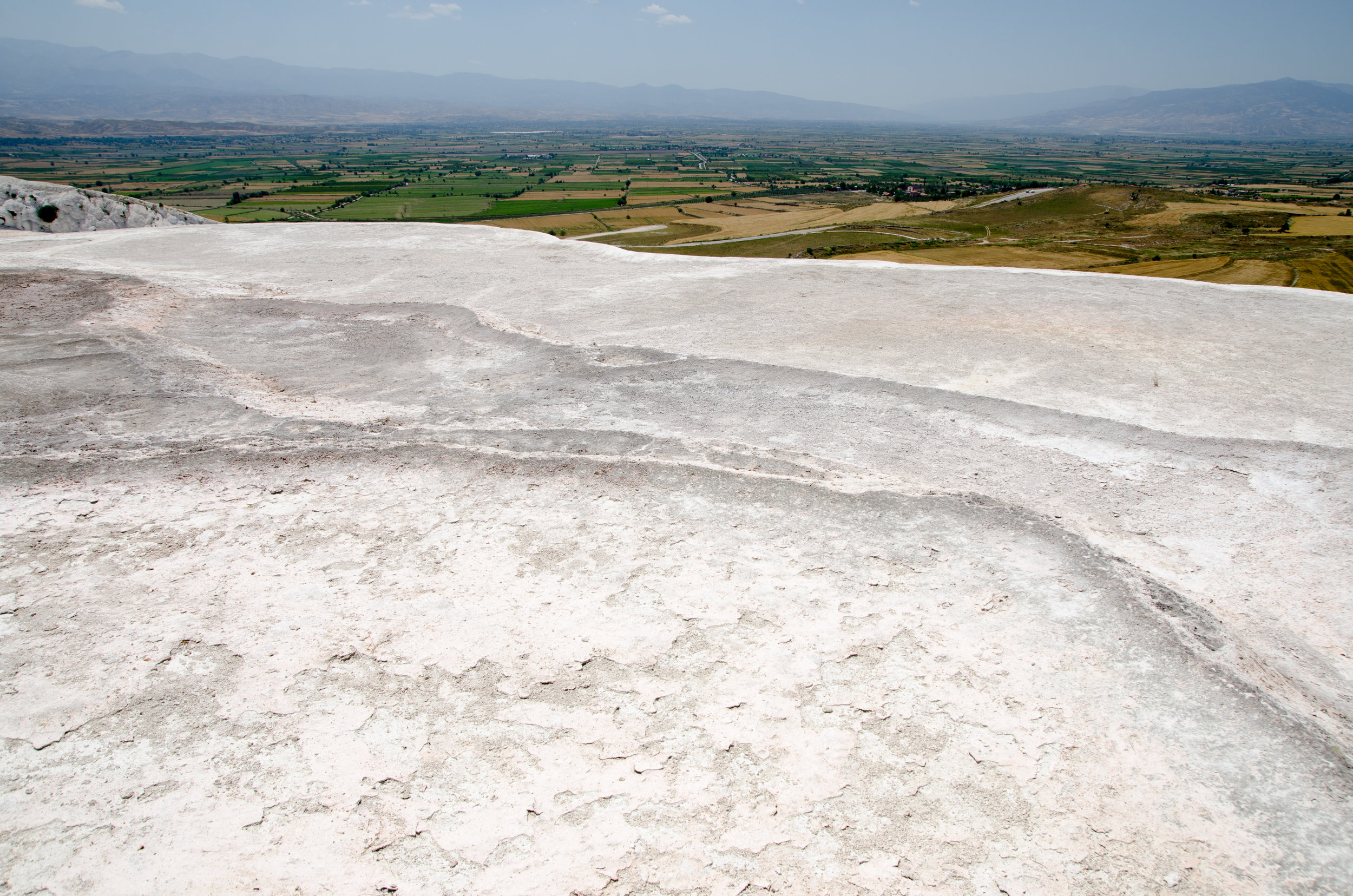
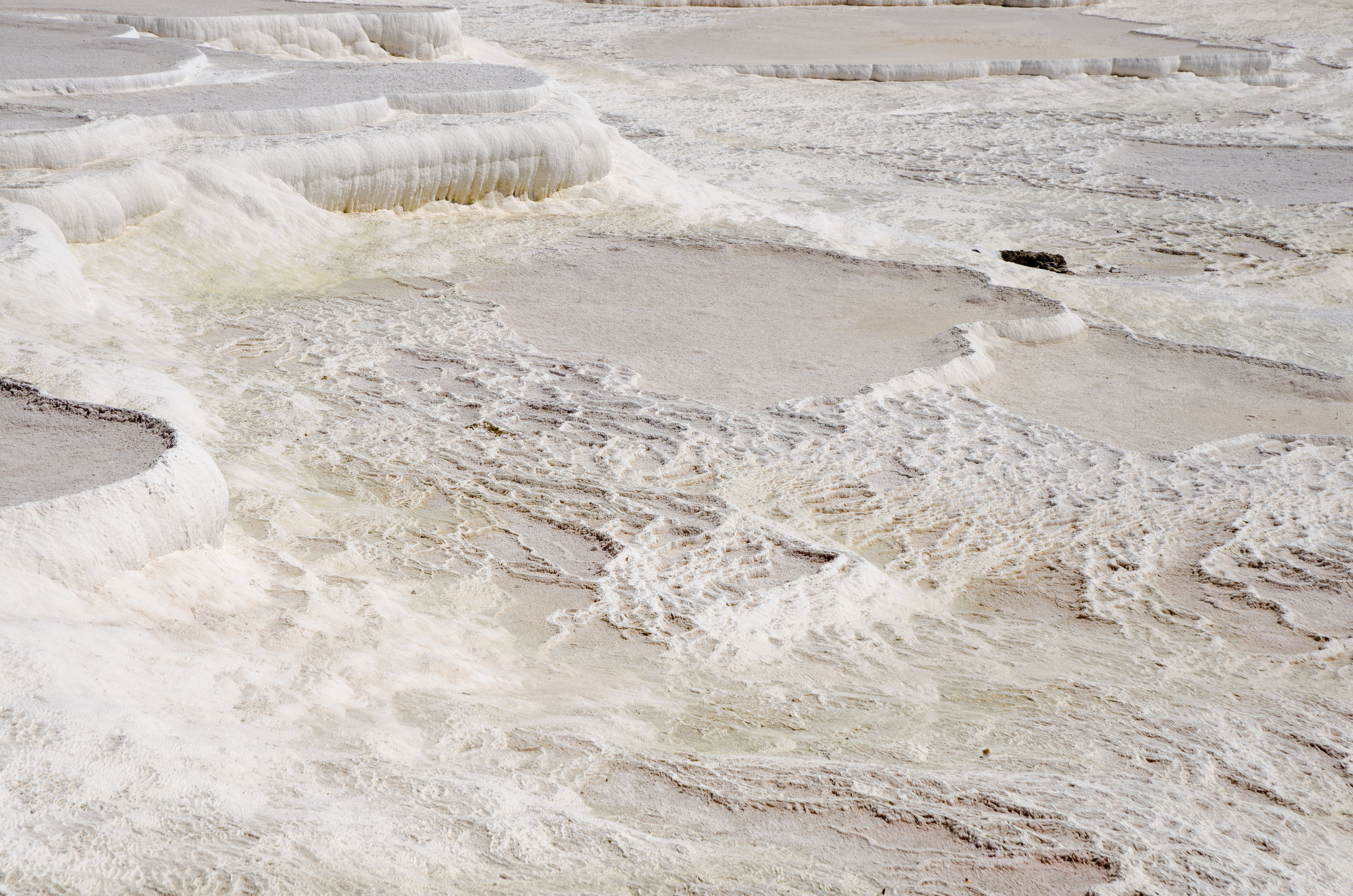
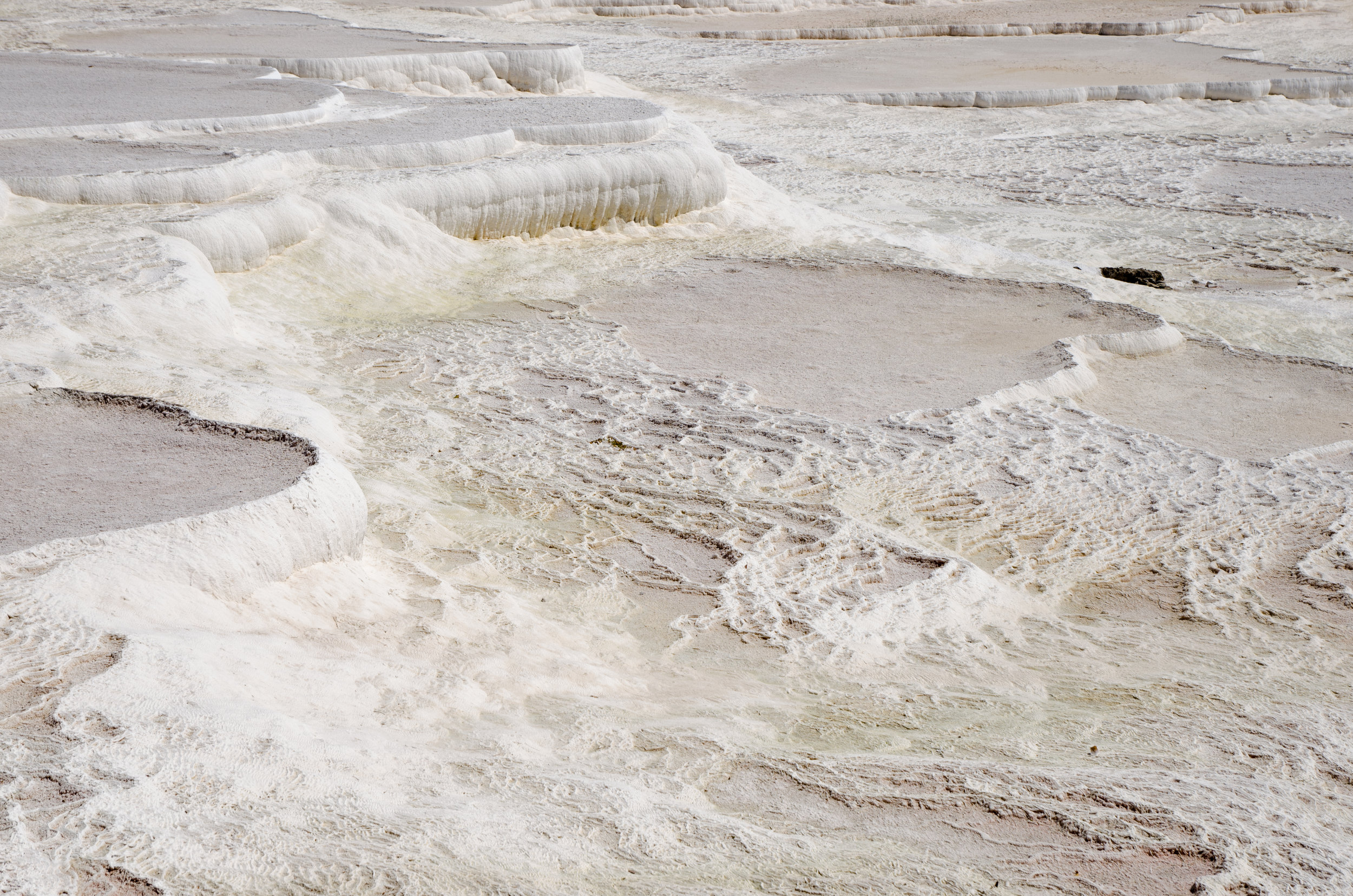
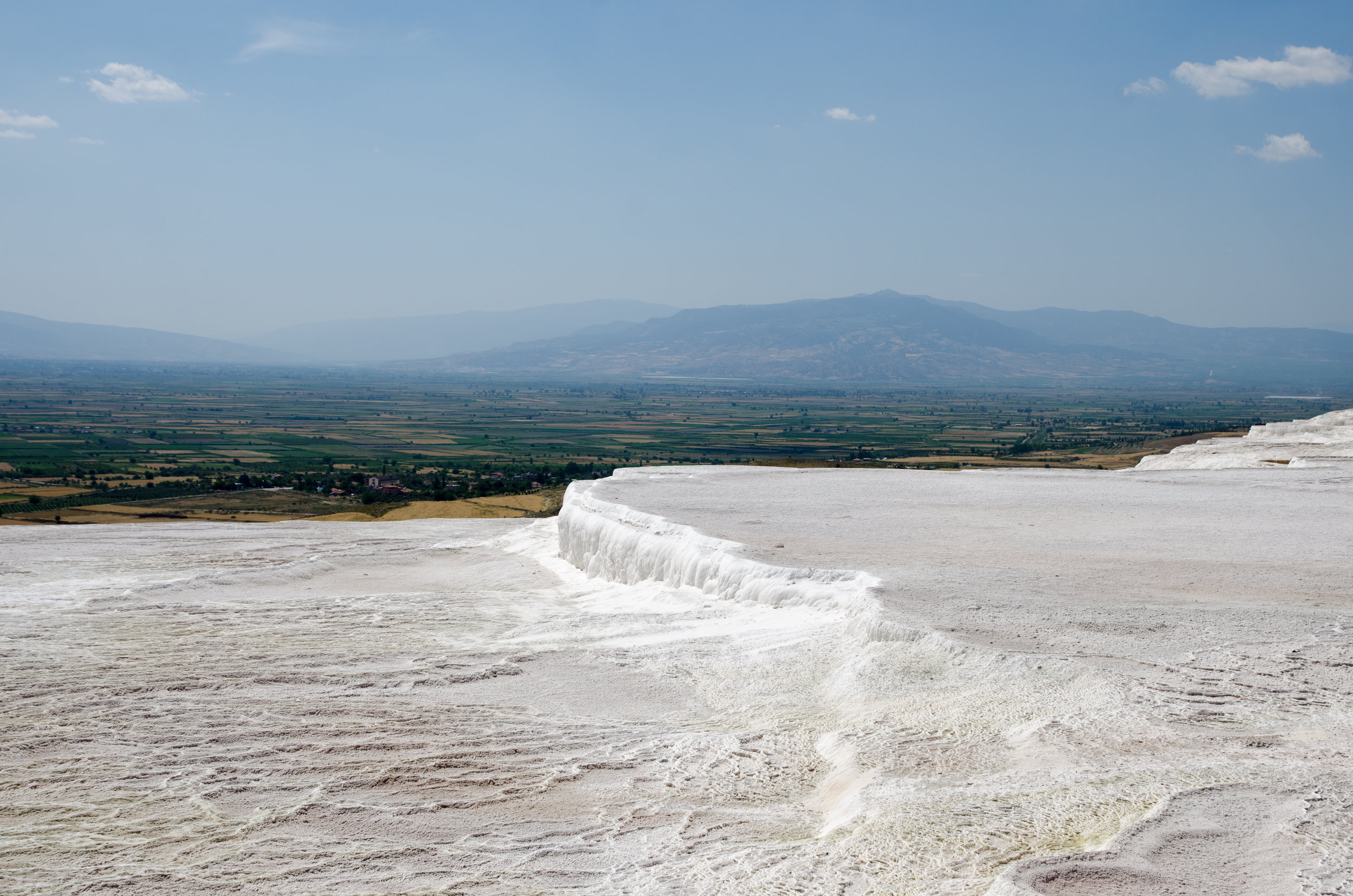
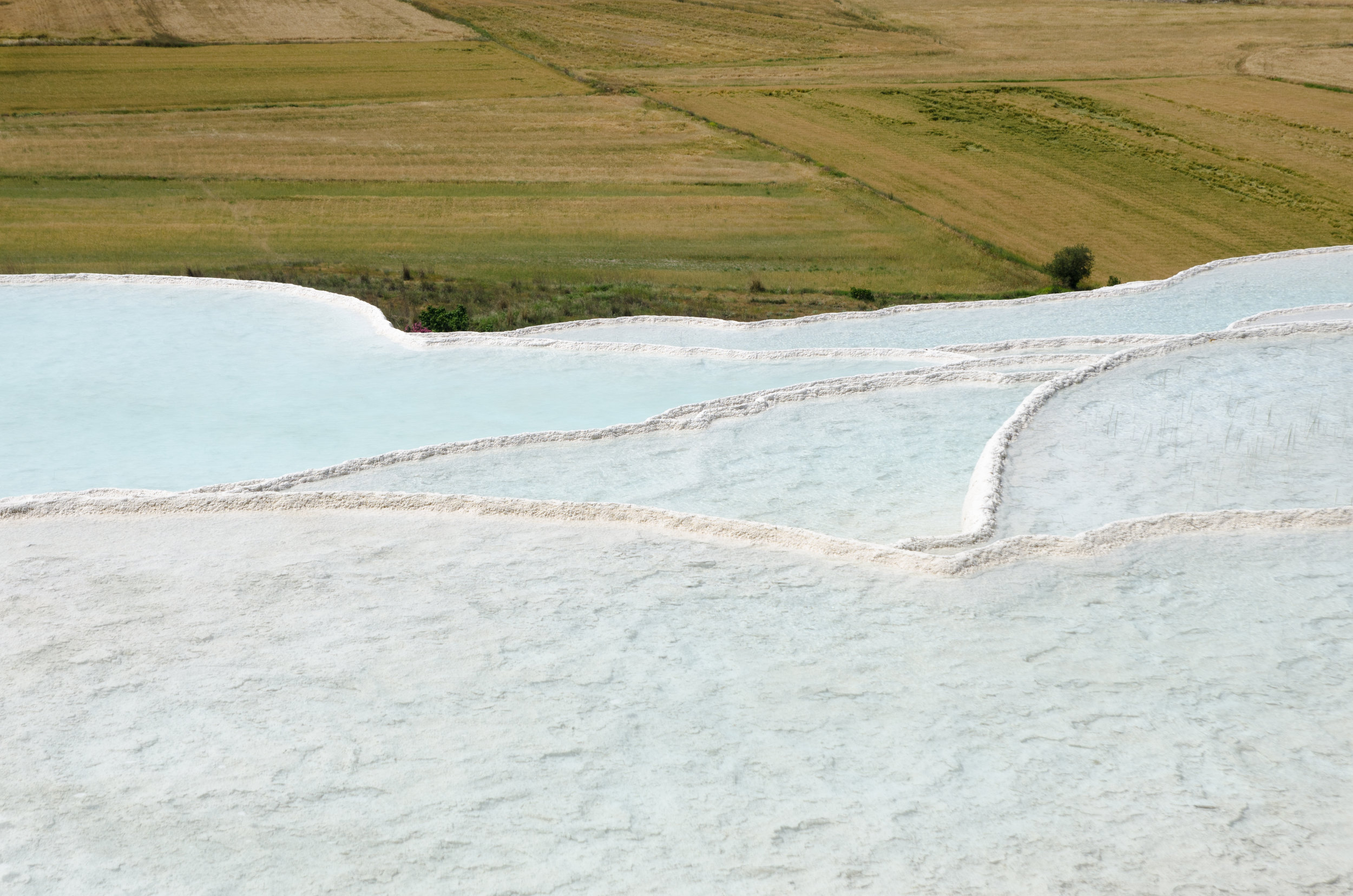
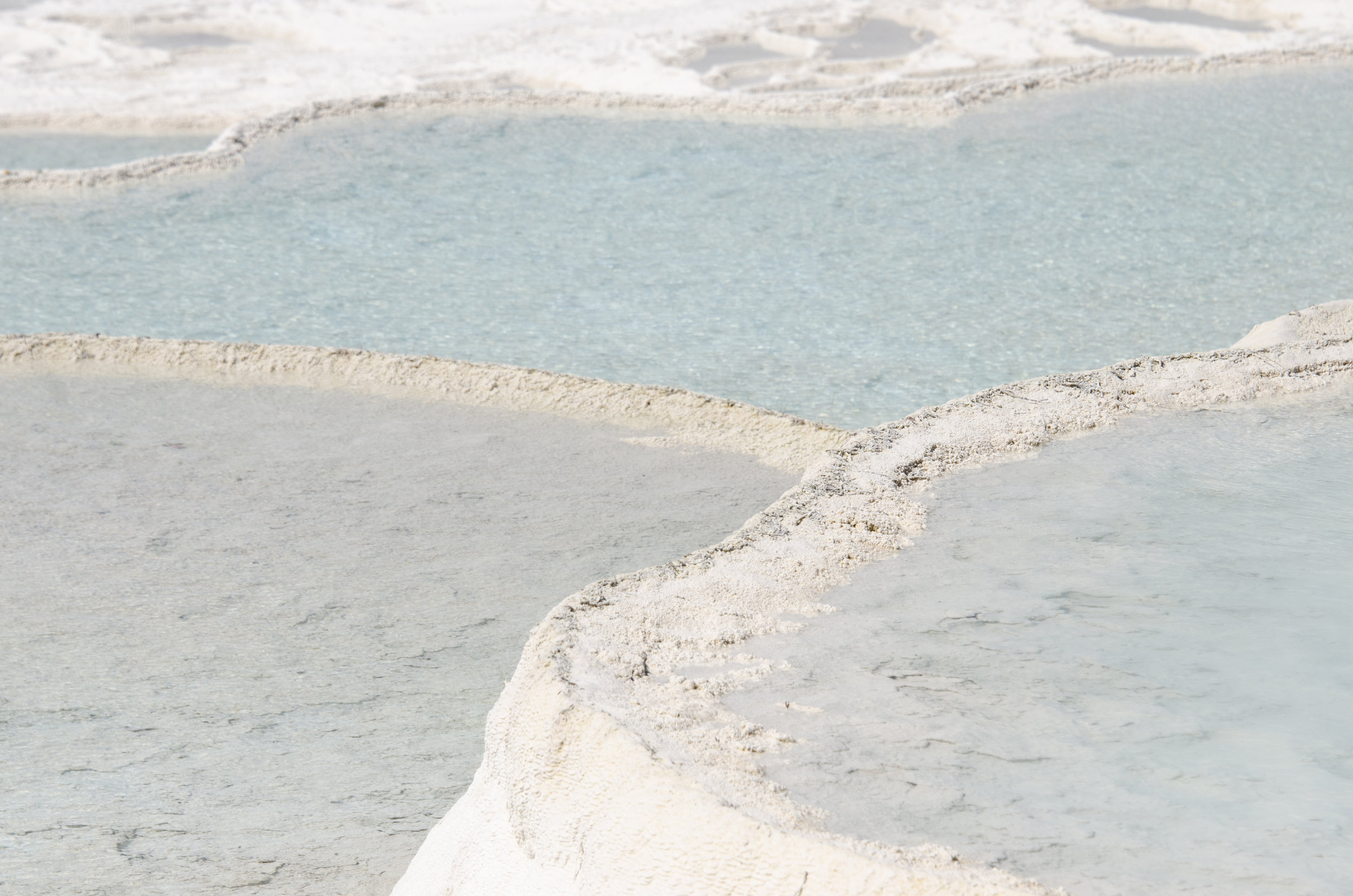
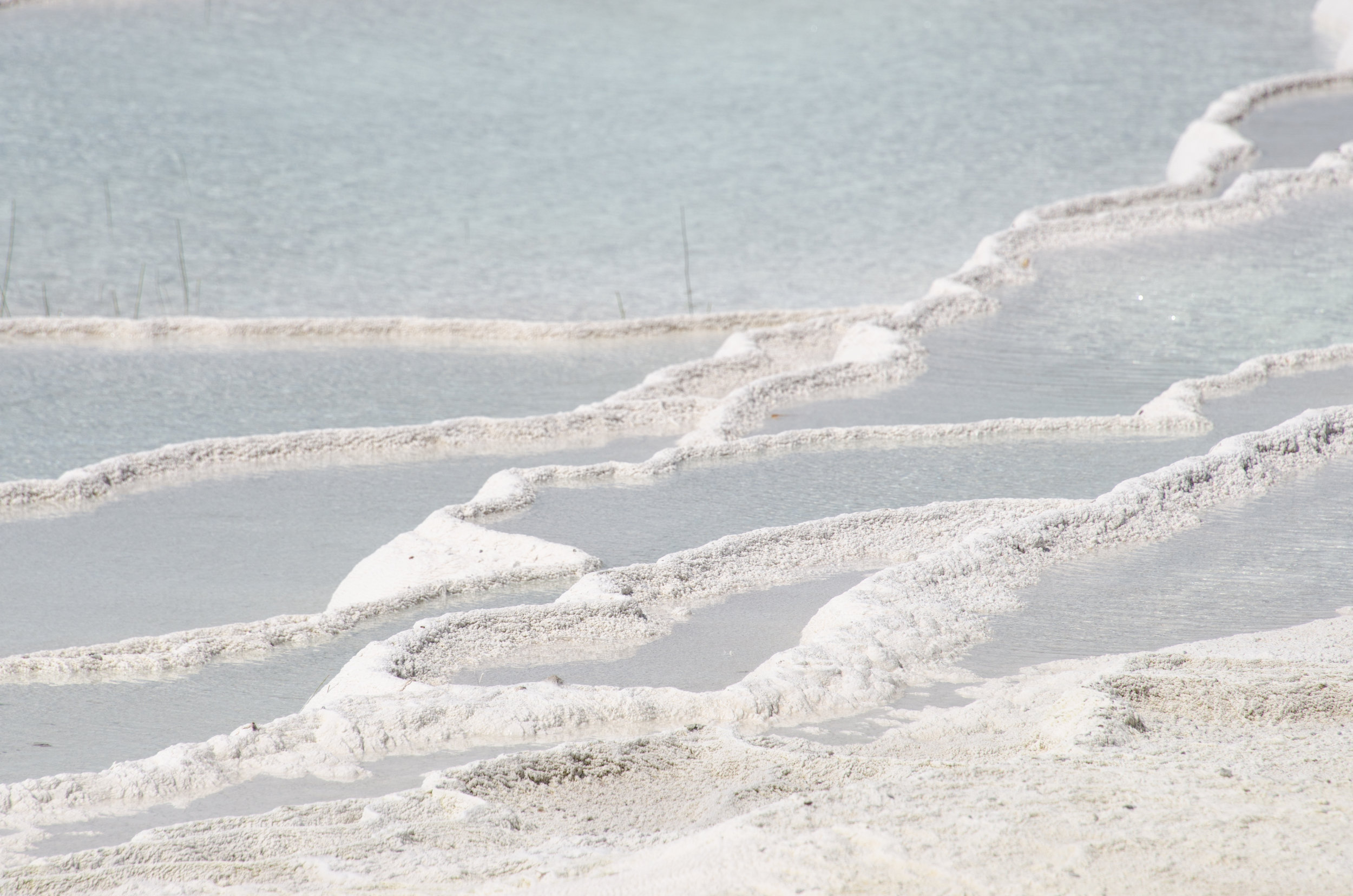
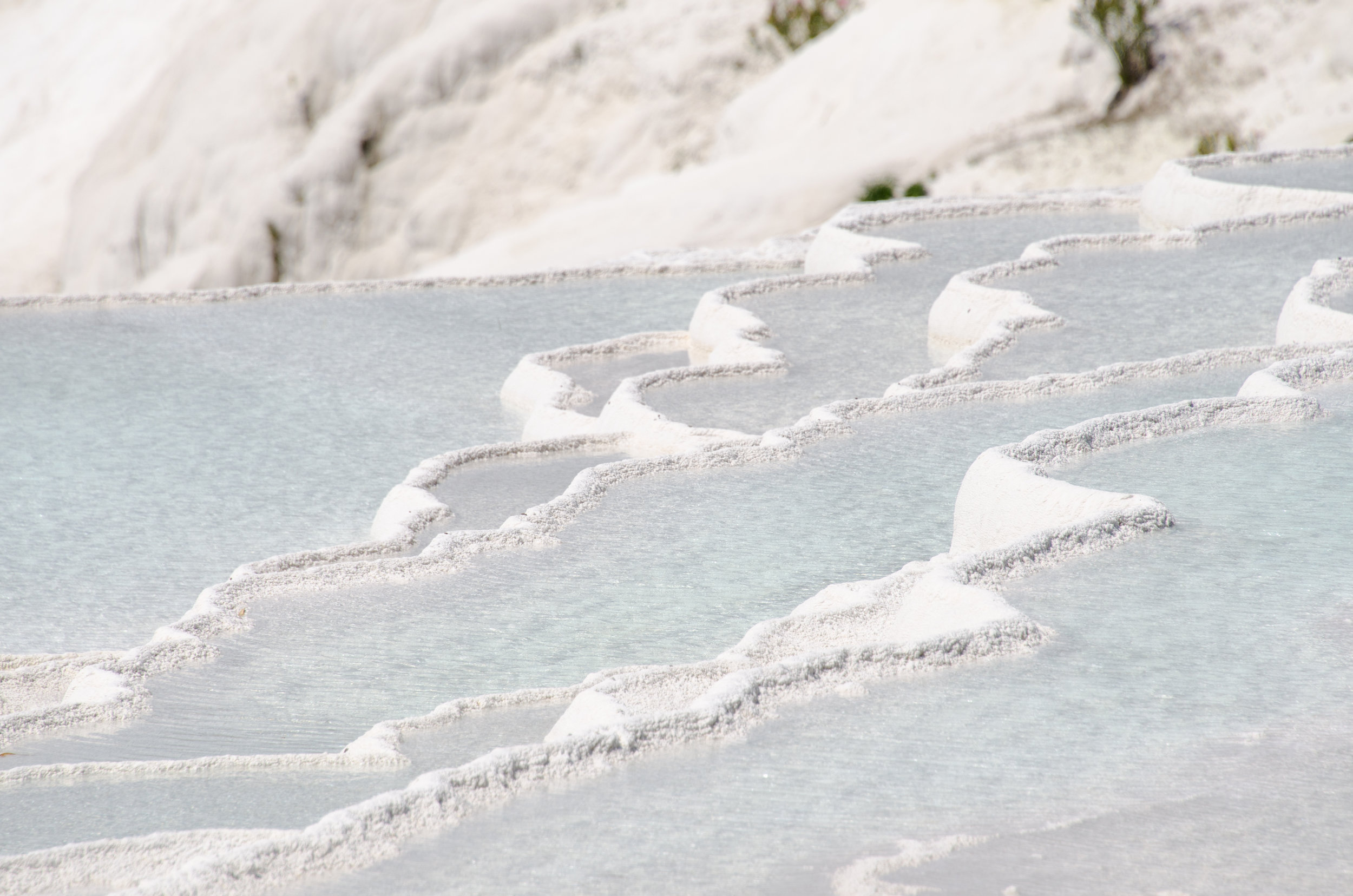
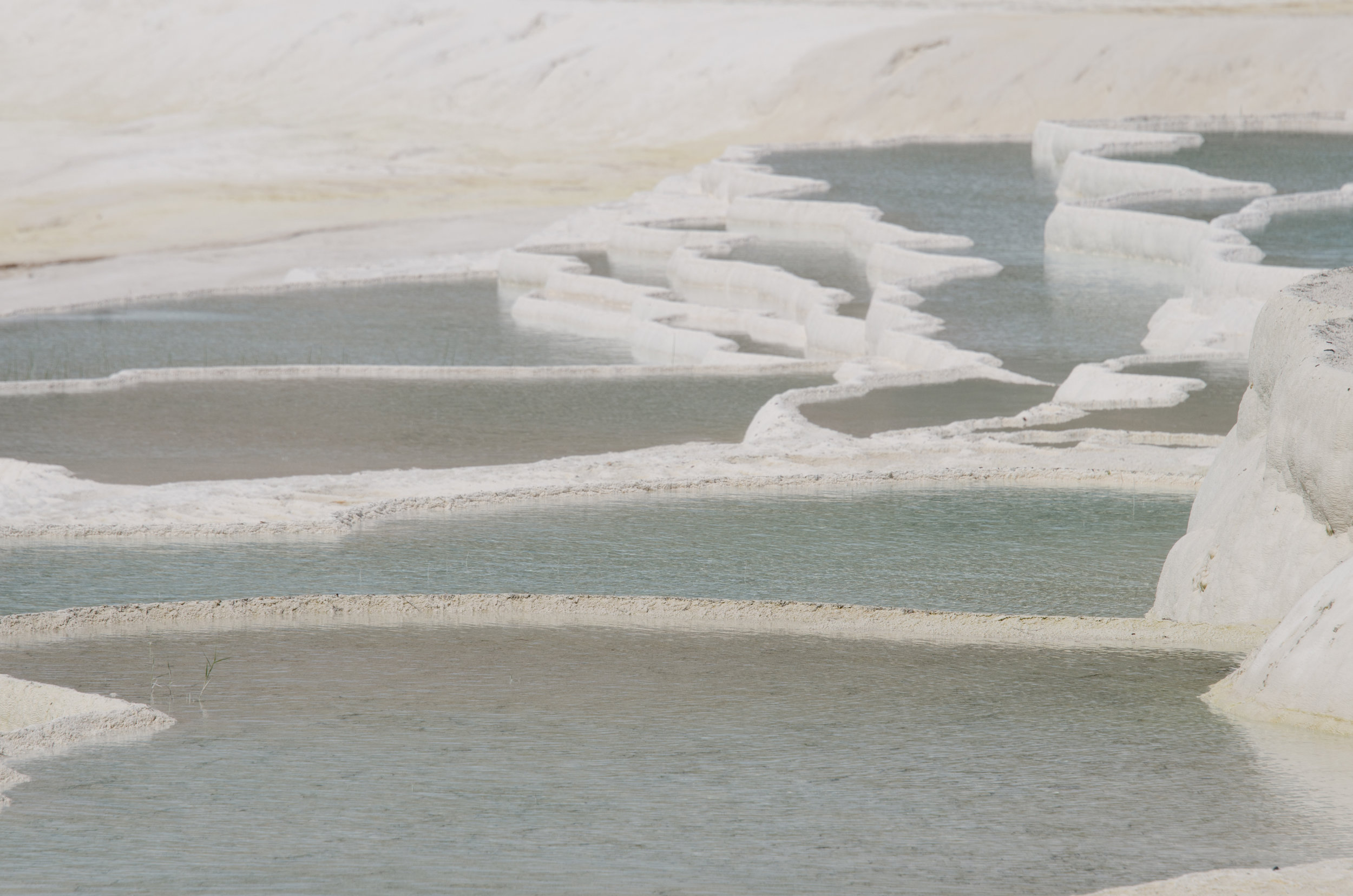
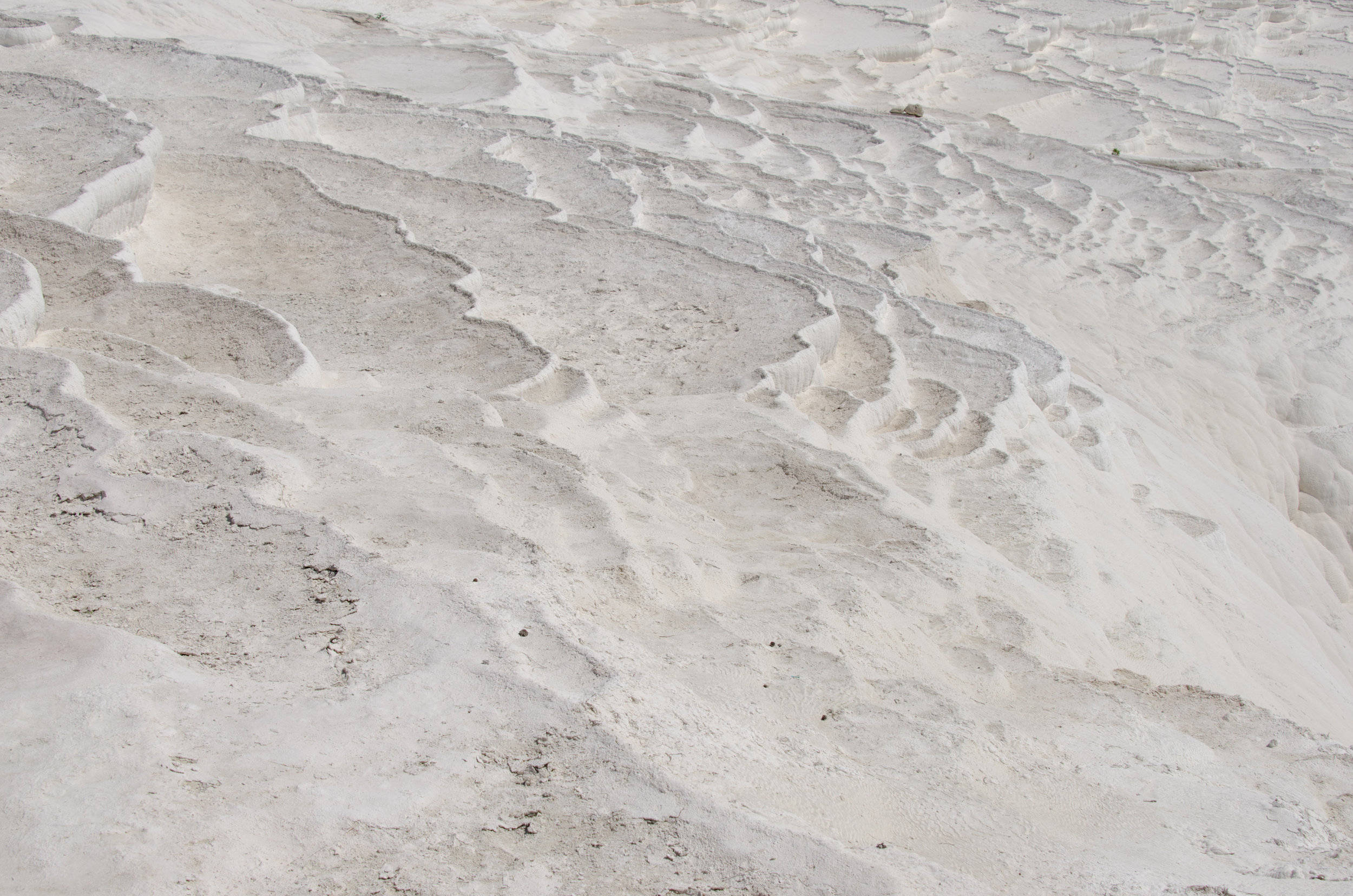
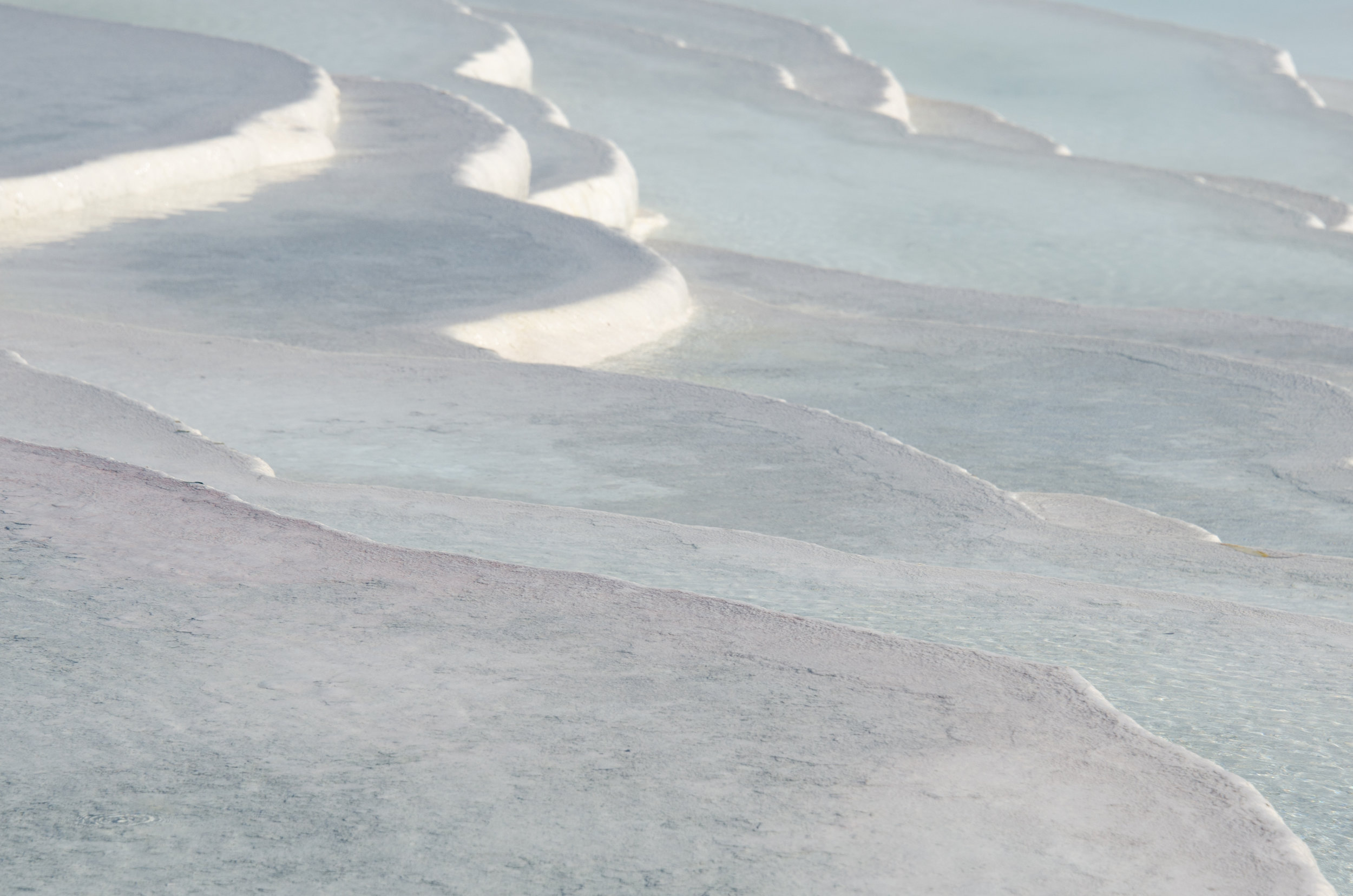
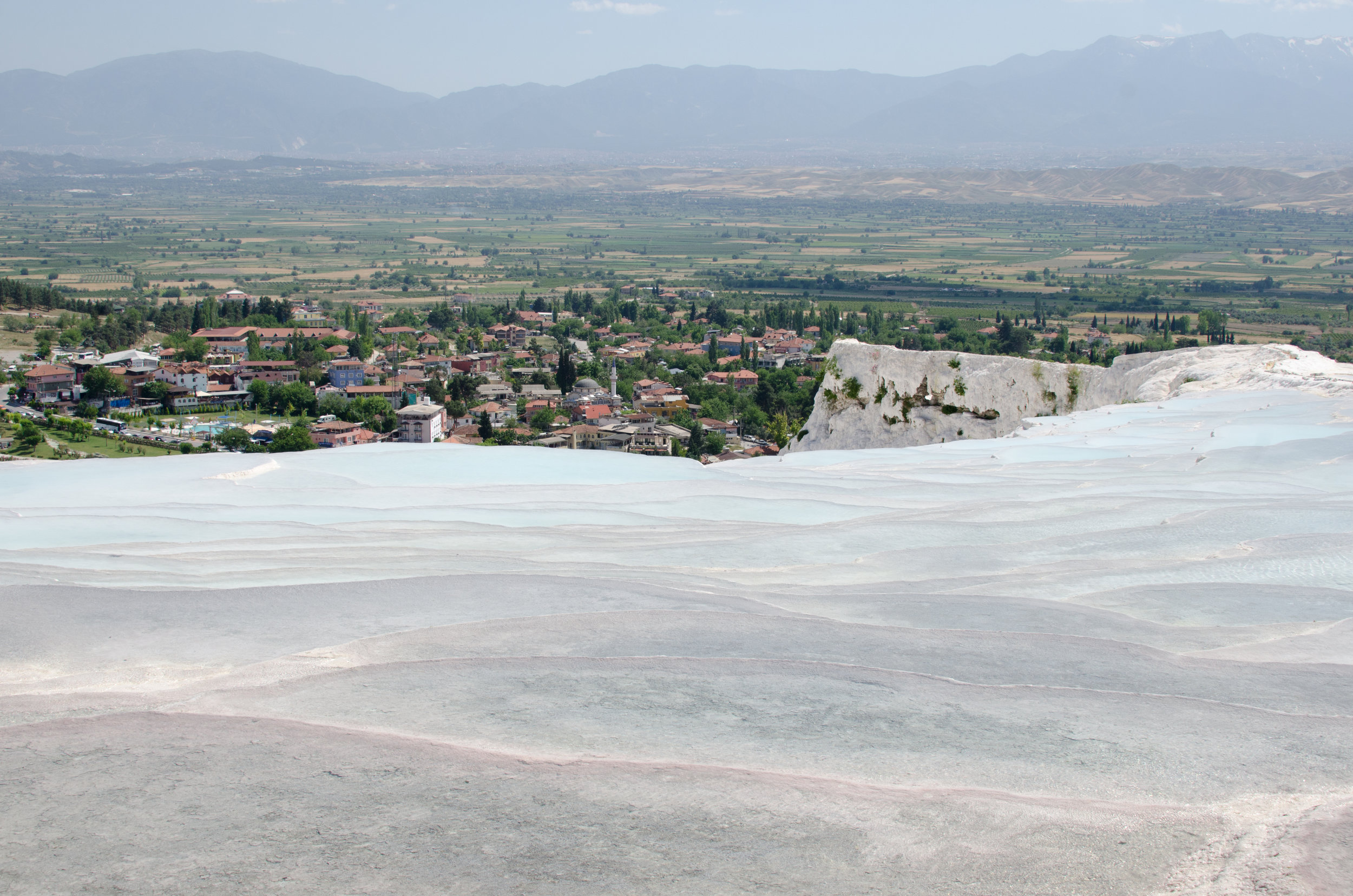
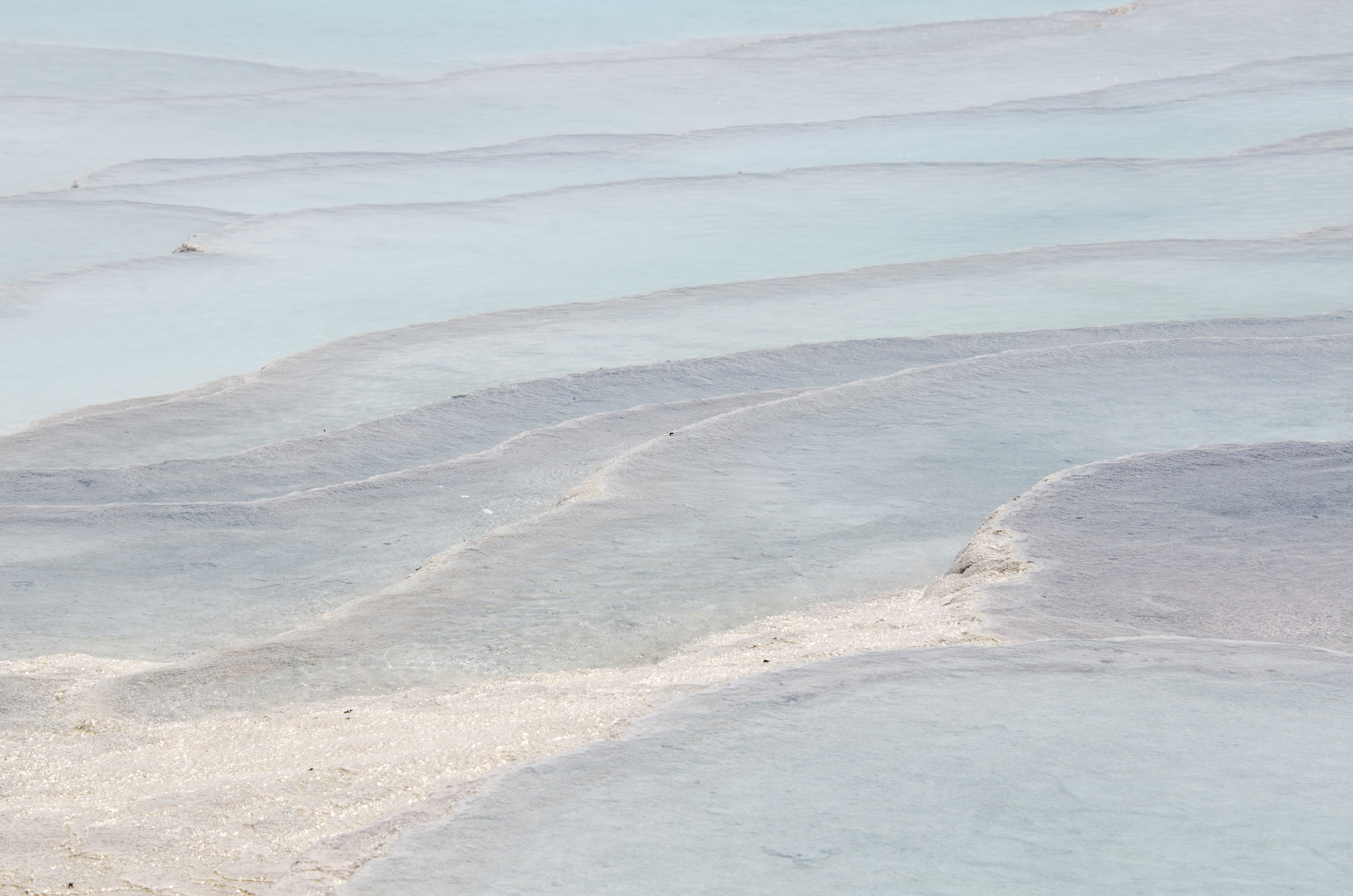
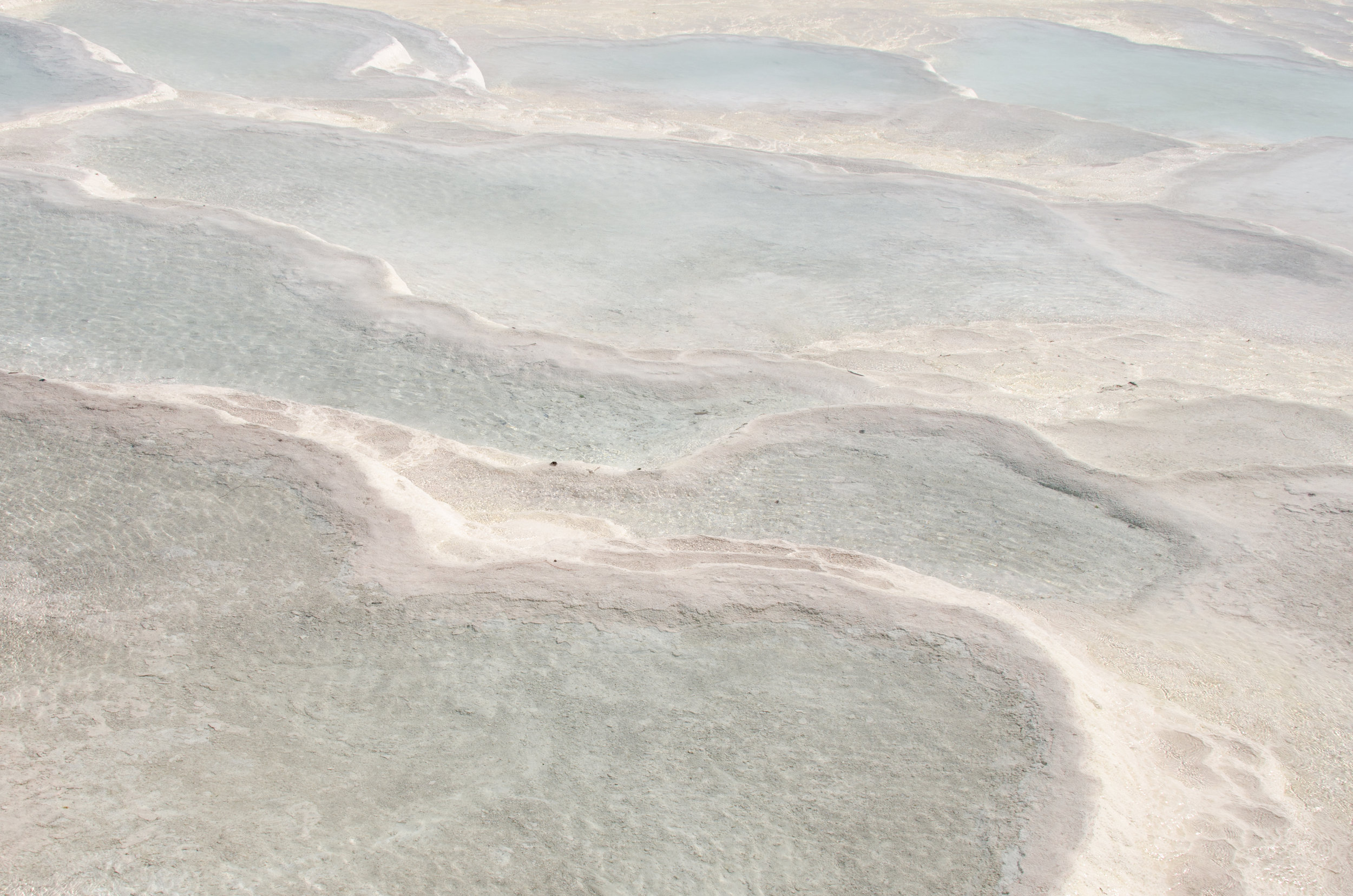
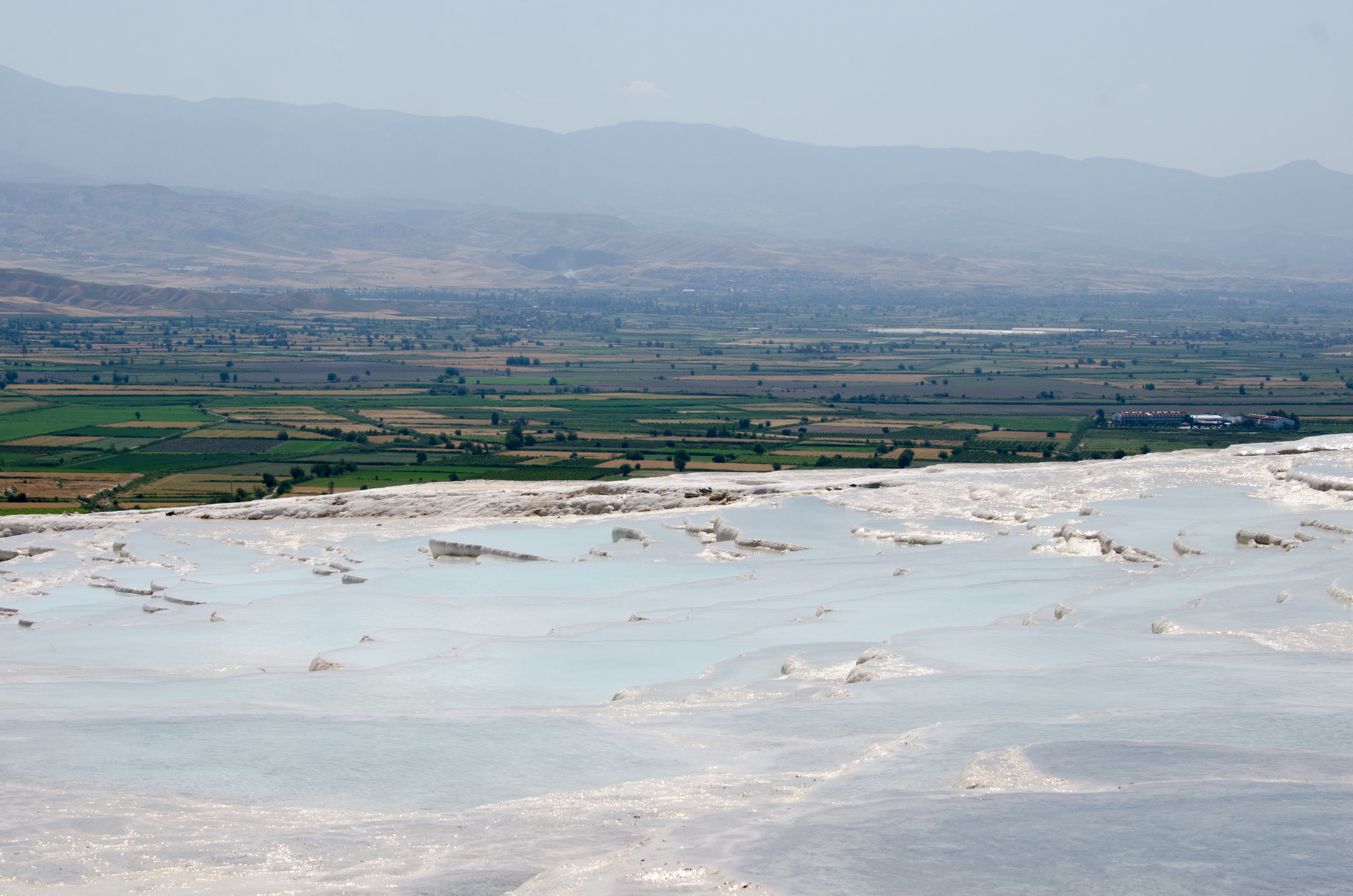

And then, as you near the top and it’s more crowded thanks to the tour buses who have deposited their groups in between Hierapolis and the travertines for their convenience. Women and men of all shapes and sizes perfect their modeling portfolios against the glistening white background. Everyone gets into the pools, standing or submerging themselves in the spring water, some smothering the chalky mineral deposits on their bodies for fun or with expectations that it will improve their health. Children have a field day. It’s equally fun participating as it is watching everyone else enjoy the natural wonder.
Once you are at the top, you can see more clearly the dried up travertines. Apparently, Pamukkale used to be a thriving town and tourism destination, until the government intervened. This is where it becomes unclear (at least to me). After Pamukkale was declared a World Heritage Site in 1988, the government removed the road leading up to the natural springs and built artificial pools for tourists to get into. Shoes were prohibited (and still are today) when walking on the slope. That part is easy to digest. What is not easy to digest is how nearly all of the natural pools of water have dried up. Completely.
It’s still stunning, but it just seems a little shady. The water is still coming from somewhere, but it’s being directed to other pools of water- not the natural pools of water. And if this picture was just taken within the past five years, what exactly is the government doing with the water flow, and why? Do they plan on letting the water flow back into the dried up pools? It’s a shame, really. Because once you see the vast amount of dried up pools, it takes away from the beauty of it all. And you don’t know whether or not you’re to blame being a tourist walking through the springs. Which again, takes away from the experience. At least it did for me, wondering if I was part of the problem or not…
I couldn’t help but think of the terraced rice paddies in Vietnam when I was photographing these terraced hot springs. I also could not stop photographing them either- obviously. Just scroll through if they don’t mesmerize you the same way they did me.
Hopefully, and I’m sure, at least I want to be sure that the government knows what they are doing and this is all just temporary. Maybe in a few years the springs will be back in all their glory and I can visit and recount the days when the springs were all dried up.
